











It’s cold outside but hot in the supply chain, where healthcare businesses are working hard to make theirs as sustainable as they can be. Chief Medical Officers are leading healthcare transformation –read on for our Top 10
Hello Healthcare Digital readers,
It used to be keys, purse, phone. Now, there are an additional three items I do not leave the house without: I have antibacterial gel in every handbag, tissues in every coat pocket and my facemask stationed at the front door – impossible to forget. Yet I’m still dodging people sneezing on the train like it’s a real-life laserquest.
But something else is bugging me: winter is dark, grey, dull – although the sunset can make up for that. So I’ve brought some more colourful clothes from the charity shops in my highstreet to make myself feel more cheerful.
I’ve also had the pleasure of meeting with Althea Australia’s Monique Gaspar and Phil Barber, who explained how Althea Australia procures medical equipment and leads successful partnerships. Wolters Kluwer Health checked in to discuss Clinical Effectiveness, while Cervest explored sustainability within pharmaceutical supply chains.


“I have antibacterial gel in every handbag, tissues in every coat pocket and my facemask stationed at the front door”

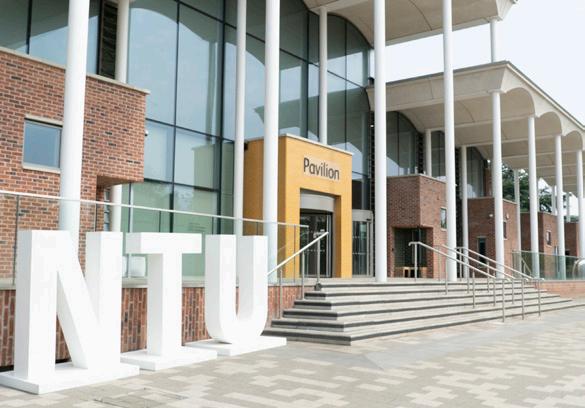


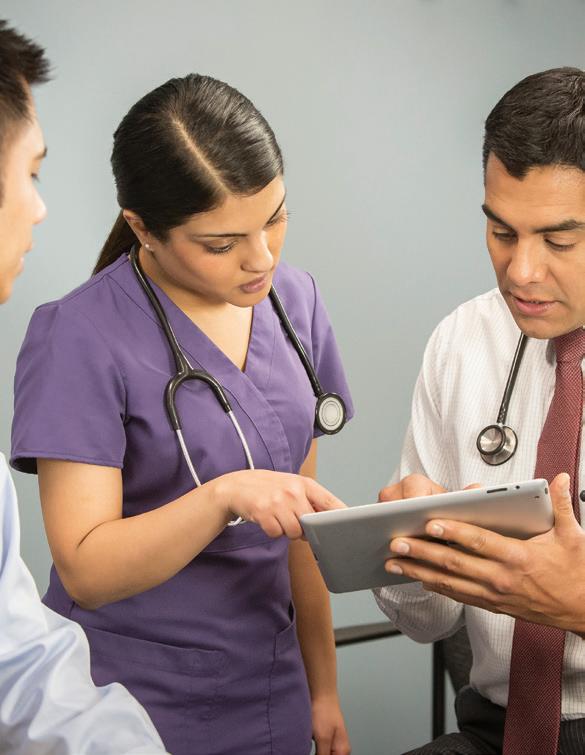





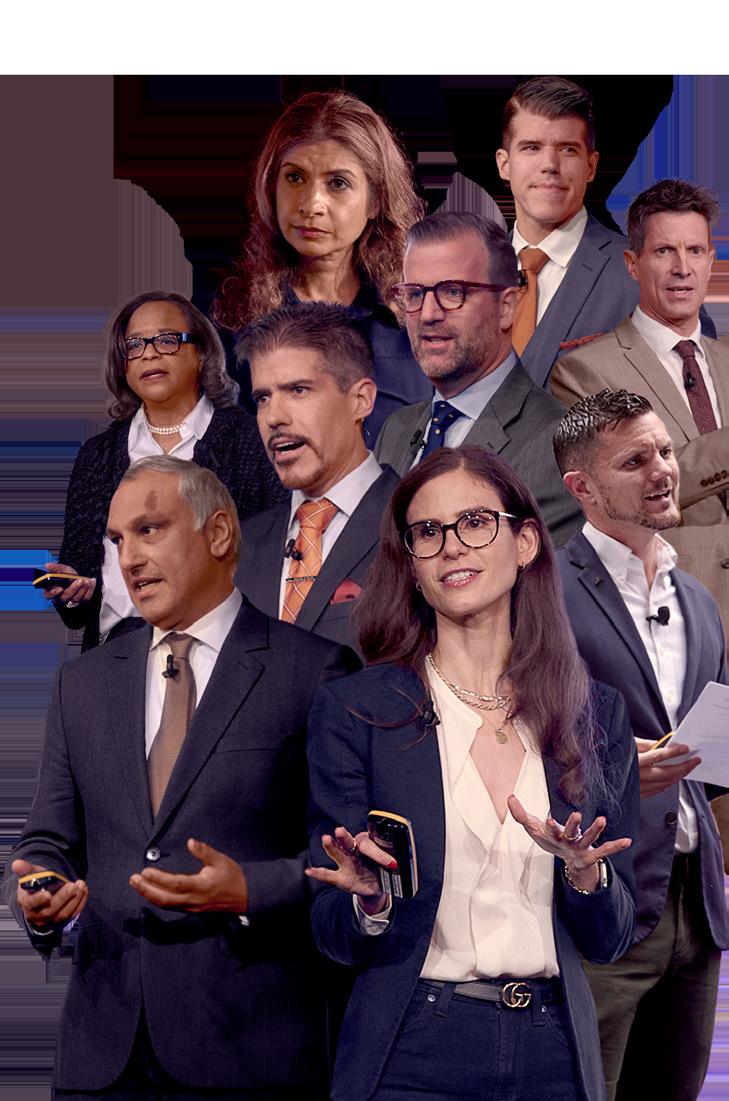
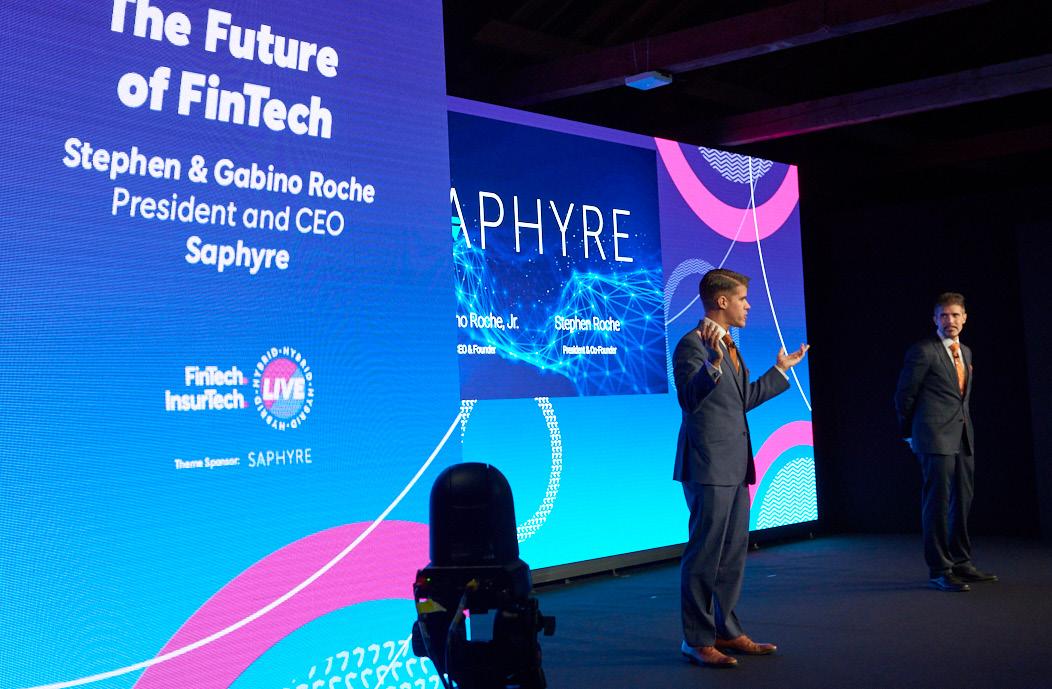
presentations, Q&A sessions to 1-2-1 networking, the 2-day hybrid show is an essential deep dive into issues impacting the future of each industry today.


giants and innovative startups will all find the perfect platform with direct access to an engaged and active audience. You can’t afford to miss this opportunity.


Singapore
Recent amendments to Singapore’s Personal Data Protection (Amendment) Act 2020 will impact healthcare providers. From 1st October 2022, the maximum financial penalty for breaches of the PDPA will be increased.

Water Footprint data revealed that ‘industry’, including pharma manufacturing, accounted for 23% of worldwide water usage


Procurement Officer
Wolters Kluwer Health: telehealth & health equity
Samios, President & CEO at Wolters Kluwer Health
Effectiveness, explores the role of telehealth post-pandemic and the rise of health
M Ventures’ Noga Yerushalmi on the role of AI in healthcare
Yerushalmi of M Ventures discusses the benefits of AI in modern healthcare and teaming up with pharma manufacturers AstraZeneca, Merck, Pfizer & Teva
Cervest’s Kate Rodger on sustainability in pharmaceuticals
Rodger of climate intelligence company Cervest discusses how pharmaceutical companies & their supply chains can become more sustainable
John Gurnett is the General Manager
UK & Europe at Innovaccer, a healthtechnology company with more than 50 health systems and hospitals. The company aims to advance innovation and digital transformation across healthcare.
Innovaccer has been rated as the #1 Data and Analytics Platform by KLAS, a leading research organisation that recognises technology and service companies in its highly regarded yearly reports for excellence in improving healthcare. The health tech company has also been rated the #1 population health technology platform by Black Book, another prestigious research organisation that bases its conclusions solely on client experience scores.
“I find healthcare to be a fluid and everchanging industry, more than any other I have worked in,” says Gurnett. “When I started in healthcare twenty years ago, technology was just a ‘nice to have’. Today, most people accept that you can’t provide or improve healthcare without it.”

Japan is the top country in the world for healthcare, according to research by Radar Healthcare. Japan’s health-tech is credited for its 1st place position.
The implantable medical devices market is expected to soar –from breast implants to ICDs, pacemakers to dentures – advances in 3D printing have led to a new era of long-term medical solutions for a healthier population.
Sepsis claims more lives each year than cancer. Clinical decision support (CDS) systems offer healthcare workers guidance in treating sepsis, helping them to identify suspected sepsis early and begin lifesaving treatment.
Obesity is expected to cost the global economy 3.3% of GDP by 2060, according to a study from the World Obesity Federation and RTI International.
10% of women have endometriosis, a little-discussed condition caused by tissue similar to that of the uterus lining growing elsewhere in the body. This creates a chronic inflammatory reaction that causes pain during periods, sex, bowel movements and urination, as well as feelings of fatigue, nausea and depression. It’s often misdiagnosed, leading to many years of unnecessary pain and difficulty among women, as well as shame – so let’s tear down the stigma.

The Ancient Greeks (12th–9th centuries BC) were behind ideas as pivotal to human history as the Olympics and democracy. They were also leaders in medicine. To ease the pain of endometriosis, a woman was tied to a ladder, then turned upside down. The ladder would then be shaken. This was believed to ‘adjust the uterus back into position’.
Abnormal tissue around the uterus discovered
Born in 1804, Austrian pathologist Karl Freiherr von Rokitansky studied medicine at the University of Prague. He went on to perform 30,000 autopsies in his career. In female patients, he studied the growth of abnormal tissue around the uterus, which led Rokitansky to detect endometriosis.
Neurologist Jean-Martin Charcot (18251893) visited the Salpêtrière, a French insane asylum where he came across women suffering from hystero-epilepsy – suspected nowadays as undiagnosed endometriosis. Charcot recorded that these women were treated as “problematic young females”, who had been abandoned “by their exhausted families”. The ward was said to be “the saddest at the Salpêtrière”.
Doctors told to ‘Listen to women’ The healthcare sector has come a long way since ‘hysteria’, yet according to the UK’s National Institute for Health and Care Excellence (NICE), it takes up to eight years for a woman to be correctly diagnosed with endometriosis. NICE told doctors to ‘listen to women’.

Freud’s manual stimulation devices
Freud diagnosed endometriosisrelated symptoms as hysteria. He believed this was caused by traumatic sexual experiences during childhood and treated patients with hypnosis or vaginal massages. The latter was obviously more popular with women, but male doctors found the process took so long, manual stimulation devices were used instead.
visit the villages my parents were from and our family couldn’t visit us at the hotel. There was no freedom at all.”
The visit left a firm imprint on Ulana and she was determined to return, but her education came first.
Ulana attended Michigan State University College of Human Medicine, graduating in 1989.
Suprun served as Ukraine’s longest-serving Minister of Health from 2016 to 2019 and is now a public health advocate and freedom fighter.
Born to a Ukrainian family in Detroit, Michigan, USA, in 1963, Ulana Suprun’s (maiden name Jurkiw) grandparents had been involved in underground movements against the Nazis and the Soviets throughout the Second World War. They sought refuge in the USA, but always hoped to return to Ukraine one day. The Jurkiw family became core members of Detroit’s Ukrainian community and Ulana later met her husband Marko in a Ukrainian youth event. They married in 1991, the year the Union of Soviet Socialist Republics was officially dissolved and the Berlin Wall came tumbling down.
As a child, Ulana visited Ukraine with her family and saw how the country had changed under Soviet rule.
“Ukraine had been crushed by Russia and, during the visit, we were followed,” she recalled. “We weren’t allowed to
Internally displaced Ukrainians in need of
“The college not only gave me the knowledge I needed to become a physician, I also received the social and cultural pieces that formulated who I am,” Suprun said. “My mentors at MSU helped me develop empathy for my patients, which was especially beneficial later when seeking solutions as Minister of Health.”
After working as a radiologist at Sinai Hospital of Detroit, Suprun moved to New York City where she supported women who felt that they were not being listened to.
After Russia invaded – and subsequently annexed – Crimea in 2014, Ulana and Marko wanted to help the Ukrainian military.
She and Marko moved across the world to obtain Ukrainian citizenship in 2015. Together, they founded Patriot Defence, which trained soldiers in combat lifesaver courses and distributed 21,000 first aid kits, catching national attention.
Prime Minister Volodymyr Groysman asked Ulana to serve as Minister of Health in 2016 and she immediately got to work, updating the legal status of health care facilities, mobilising
Ukraine’s longest-serving Minister of Health, and Founder of Patriot Defence


universal health coverage through the National Health Service of Ukraine, and allowing Ukrainians to choose their physicians and health care facilities.

In modern warfare, the wide availability of cameras has led to unforgettable photographs of war crimes being instantaneously documented and shared globally. For Russia’s invasion of Ukraine, the defining photo is of a pregnant woman being evacuated on a stretcher from a maternity ward in Mariupol. Sadly, neither mother nor baby survived Russia’s attack against the hospital.
The post-WW2 1949 Geneva Convention states that: ‘Civilian hospitals may in no circumstances be the object of attack but shall at all times be respected and protected by the Parties to the conflict’. The World Health Organisation recorded Russia’s 100th attack on a Ukrainian healthcare facility in April.
At the time of writing, there are more than 7 million internally displaced Ukrainians who, in times of war and peace, need healthcare. Ulana is ready with Patriot Defence, an organisation she founded to train soldiers in first aid. There is a lot of healthcare improvement to be done in Ukraine, according to Ulana.
"None of the hospitals are prepared for mass casualties," said Suprun. "The larger, second-line military hospitals in Dnipropetrovsk and Kharkiv boast that only 1% of the soldiers they care for pass away, but that's because the critically wounded guys die before they can ever get to those hospitals."

“My MSU mentors helped me develop empathy for my patients, which was beneficial when seeking solutions as Minister of Health”
» “My name is David Chen, and I am the co-founder and Chief Technical Officer of Orbbec. As a widely published research engineer, my expertise lies in digital imaging technology, optical measurement and imaging processing. I hold a PhD in mechanical engineering from Oakland University.”
» “Before starting Orbbec, our founders were focused on 3D-visionbased measurement technologies on material property and structural stability at the industrial level. As we worked on this technology, we discovered 3D-vision-based technology plays a vital role in many other industries as well. Our team was particularly inspired by the Microsoft Kinect launch – sparking our idea to put 3D technology into an ASIC chip and make it affordable for a variety of industries.”
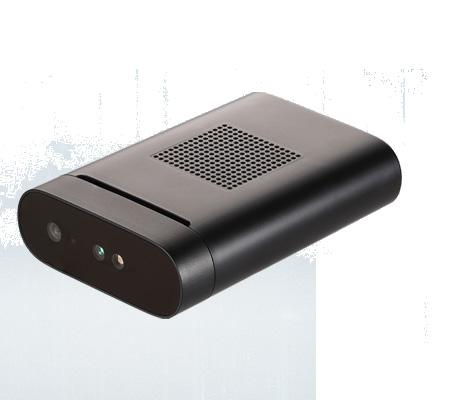
“Orbbec is an industry leader in providing 3D vision technologies that is dedicated to creating intelligent technologies for every human, everywhere. Achieving this requires superb 3D cameras that are affordably priced and universally available. “At Orbbec, we are committed to applying 3D vision technology to various industries including retail, robotics, transportation, logistics, entertainment, healthcare and many other fields.”
DAVID CHEN IS THE COFOUNDER & CTO OF ORBBEC, AN INDUSTRY LEADER IN 3D VISION TECHNOLOGY. HERE, HE DISCUSSES HOW THIS TECHNOLOGY IS TRANSFORMING THE HEALTHCARE INDUSTRY AND THE WIDER POTENTIAL ACROSS THE 3D TECHNOLOGY SPACE

» “3D camera technology is vital to the innovations being made in healthcare today. During the pandemic, 3D embedded robots made drastic changes to the healthcare field that will certainly be prevalent in a post-pandemic world.
“These 3D embedded robots performed several tasks in hospitals to help reduce the spread of
viruses like COVID-19, including automated disinfection, supply transportation, custodial and guiding tasks in hospitals.
“Today, robotic nurses carry out repetitive and monotonous tasks that eat into staff’s time. With more time to focus on patients, staff can handle issues that require human decisionmaking skills, care and empathy.
“3D tech is already deployed in other areas of healthcare, both at home and in hospitals, with great success. For example, 3D cameras can capture the patient’s 3D shape and positions during CT or MRI scans, allowing for AI software to quickly recommend and adjust the optimum scan position.
“A few additional examples include fall detection and patient monitoring via 3D cameras, which have already been deployed in hospitals worldwide. Using structured light
“DURING COVID-19, 3D EMBEDDED ROBOTS MADE DRASTIC CHANGES TO THE HEALTHCARE FIELD THAT WILL BE PREVALENT IN THE POST-PANDEMIC WORLD”
technology, Orbbec’s Astra Series can perceive objects and people that are in the path of the projected infrared pattern. This information allows CogvisAI technology to detect unusual movement inside a room to alert staff of a potential problem such as a fall with a patient. “Similarly, 3D cameras aid in making post-surgery rehabilitation therapy and recovery more engaging and accessible. Utilising Orbbec 3D depth camera with body tracking with Mira’s software makes recovery and recuperation easier for patients, helping those who are coming through surgery or injury to regain their mobility as well as cognitive functions.
“With the introduction of gamification, patients have fun and interact in ways that make recovery in the comfort of their home possible. This technology also tracks the process of their recovery, providing valuable information that can be used to adjust and personalise therapy programs for a speedier recovery.”
» “3D camera technology utilises perception of depth in images to replicate three dimensions as experienced through human binocular vision. In the healthcare realm, patient confidentiality is necessary across all sectors. At Orbbec, our systems don’t need to use the RGB data collected by our cameras all the time, so we can protect privacy very well. In some instances, such as when a patient has fallen to the ground or 3D embedded robots are roaming the halls, 3D cameras may interpret anomalies in depth data without the need to read every detail in the image, protecting patient-specific data.”

“AT ORBBEC, WE ARE COMMITTED TO APPLYING 3D-VISION TECHNOLOGY TO VARIOUS INDUSTRIES, INCLUDING HEALTHCARE”
“One of the biggest lessons I’ve learned at Orbbec is to slow down and focus on the little details. Slowing down has allowed us to home in on improving our designs and manufacturing process. We’ve also learned to focus on the things we’re good at. There is so much potential in the 3D technology space, but oftentimes these potential opportunities don’t work out. At Orbbec, we’re dedicated to putting our time and effort into the projects we know we can find success with.”
»
»
“So far in 2022, we have seen the exponential growth of our product line – announcing both the Persee+ and the Femto Time of Flight (ToF) camera line. Both innovations are huge steps forward in industries such as retail, robotics and other fields.
“In the next 12 months, we will continue to focus on bringing industry-changing products to our customers and collaborating with leading platforms on AI and algorithm software to provide reliable hardware pushing our 3D vision forward.”
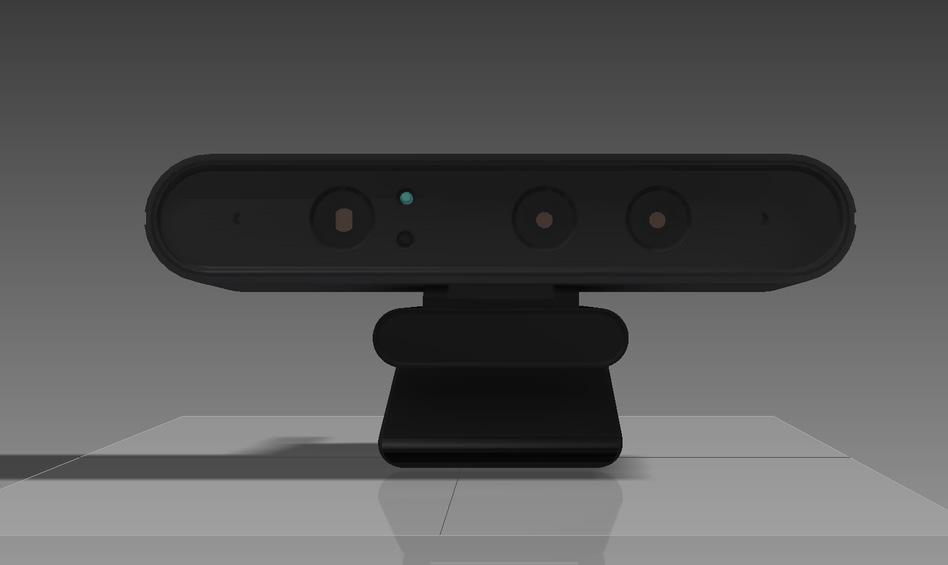
We help busy and lean security operations teams save the day — day after day.



Andrew Hollister, Deputy CISO and Vice President of LogRhythm Labs, shares how the company is mitigating cyberattacks on healthcare organisations.
Security intelligence company, LogRhythm, was founded with the ambition to save the world from cyber threats. The founders saw the importance of equipping network defenders with the tools they needed to quickly see what threat actors were doing and to be able to respond to those activities.
LogRhythm supports small businesses through to multi-national enterprises, offering them a wide range of services. One of the main sectors it works with is healthcare.

Andrew Hollister, Deputy CISO and Vice President of LogRhythm Labs said: “Healthcare organisations are in a unique position. They’re holding huge quantities of sensitive data making them prime targets for bad actors that are directly focused on compromising patient data and critical hospital technologies.”
Hollister outlined ways in which LogRhythm assists healthcare in the fight against cybercrime. Its primary way of helping is with threat detection, explaining that they help detect threat actors in their customers’ environments early to mitigate risks, and provide support to meet compliance requirements.

“Typically, healthcare organisations don’t have massive cyber security budgets. Through our platform, we can help our healthcare customers get the most value from the resources that they have. We’ve also developed the Security Operations Maturity Model that helps organisations of all types develop their security operations and improve their resilience to cyberthreats. Security is not a step; it is a journey, and we want to provide guidance to organisations to help them.”
Speaking on the importance of partnerships, Hollister noted that the company seeks to make it a bidirectional effort. “We’ve worked with many healthcare organisations over the years and as a result, we’ve gained insight into how those organisations work and where their priorities are. We’ve been able to develop specific content that helps healthcare organisations with the challenges they have in the cybersecurity space.”
LogRhythm’s overall focus continues to be on reducing the time that it takes to detect and respond to cyberattacks and provide solutions that evolve with the ever-changing threat landscape.



SCOTT BIRCH
STUART IRVING

Making the transition from academic theory to realworld application that has a positive impact on people’s lives is the stuff that scientific dreams are made of. It’s a dream that has become a reality for Eiman Kanjo, Professor of Pervasive Computing and Head of the Smart Sensing Lab www.SmartSensingLab. com at Nottingham Trent University’s School of Science and Technology.
“That's the best thing that you could do as an academic,” she says proudly. “Normally we write or present our work in an academic papers, which is good, but to see it being used by real people and to see the real impact, that makes our job worthwhile.”
Prof Kanjo is a true technology pioneer –she coined the phrase ‘mobile sensing’ and wrote some of the earliest papers on the subject. Prof Kanjo was also responsible for the first noise monitoring system (NoiseSpy) where a phone microphone is used to record environmental noise.

Prof Kanjo is also among the Top 50 Women In Engineering winners 2022.
Now her work at Smart Sensing Lab leans towards Deep Learning, Data Science and AI, especially in a mental health and wellbeing context.
Today, Prof Kanjo is proudly showcasing an Artificial Intelligence (AI) and Internet of Things (IoT) platform developed at Smart Sensing Lab called “Tag With Me”, www.TagWithMe.com.
How Highbury Hospital in Nottingham is trialling AI tagging technology developed by the Smart Sensing Lab at Nottingham Trent University

Prof Kanjo has been selected in the Top 50 Women in Engineering by the Women’s Engineering Society (WES).
Kanjo, Prof of Pervasive Sensing and Head of the Smart Sensing Lab in NTU’s School of Science and Technology, researches topics including mobile sensing, edge computing, data science and technology for wellbeing.
She says: “My hope is that engineers and technologists, female and male, play a more prominent role in shaping the world's future,” says Kanjo. “We design and develop systems that respond to local communities’ needs and we work hand
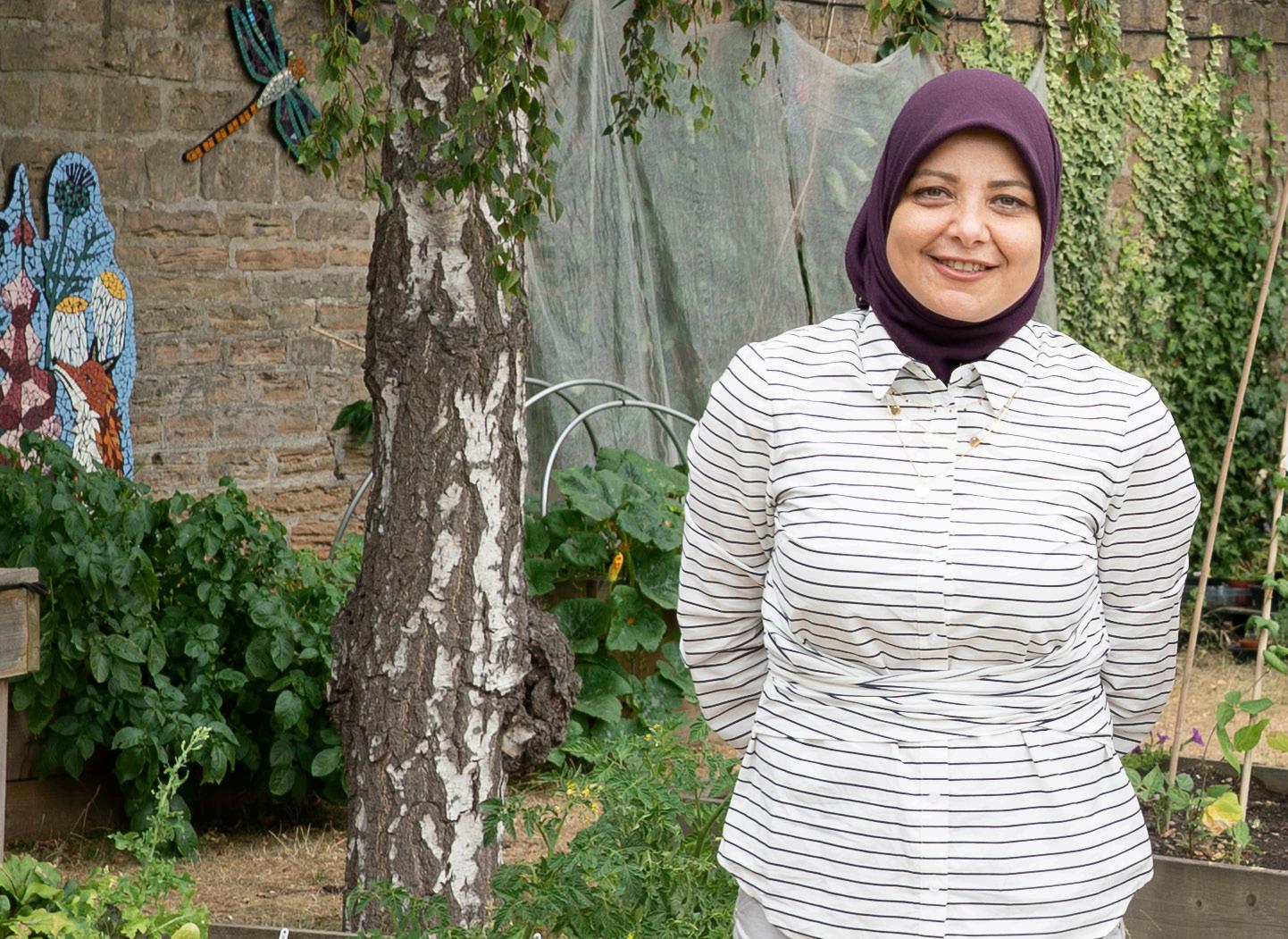
in hand with end users’ organisations to understand what we can do.”
When it comes to encouraging more women and girls to take up a career in STEM, Kanjo is something of a role model.
“I always loved technology, and computer science, engineering, and I love working with hardware,” she says. “I think the work that we do is very important to show young girls that women can lead these kinds of developments, especially in engineering and technology. So being a role model is very important. And when they see that other women are doing it, they might think that they can do it, too.”
Smart Sensing Lab builds systems and digital tools for social good, such as wearables and smart devices, working with end user organisations such as hospitals, local authorities, and charities to help them to solve real world problems.
An early version had already been field tested in Nottingham but we are here to officially launch version 2.0 at Highbury Mental Health Hospital in the city.
The lab’s Tag With Me platform was used in as part of the world-first 5G Connected Forest project (the famous Sherwood Forest (of Robin Hood fame)) that brought that story and habitat to life. The first deployment was at Rufford Abbey Country Park to encourage people to be more active, which is when the conversation started with the hospital to encourage both service users and staff to walk the mile-long (Highbury Mile) route around the grounds.
“We built a platform and on top of this you could build different layers, different applications,” says Prof Kanjo. “So we started with the park to keep people physically active, and then another one for the hospital to improve patient well being by keeping them active. We could also adopt it for schools and education, to allow children
Prof Eiman Kanjo is a Professor of Pervasive Sensing at the Computer Science department, and the Smart Sensing lab lead. The Smart Sensing team has, under her leadership, won the 2021 Vice-Chancellor’s Outstanding Researcher Team Award. Eiman has been selected among the Top 50 Women in Engineering by the Women in Engineering Society. She is the NTU-Turing Network Development Award Lead funded by Alan Turing Institute. Eiman conducts research in Mobile Sensing, Digital Health, and wellbeing. Eiman has developed a new IoT-AI Technological platform to improve wellbeing and increase physical activities “www.TagWithME.com, which is currently hosted by Rufford Country Park and Highbury Mental Health Hospital. She has been PI or Co-I on grants worth over £15mn, funders including DCMS (5G Connected Forest, £10m project in collaboration with Nottingham County Council and many industrial organisations), InnovateUK, SBRI, DSTL, ERDF, MoD, Lottery Fund. She works closely with charities, local authorities, Police & industry. Previously, Prof. Kanjo worked for more than three years as a Research Fellow at the Computer Laboratory, University of Cambridge. Prof. Kanjo carried out research work at the MRL (Mixed Reality Lab), Computer Science Department,
“My hope is that engineers and technologists, female and male, play a more prominent role in shaping the world's future”
PROFESSOR EIMAN KANJO
PROFESSOR OF PERVASIVE COMPUTING & HEAD OF SMARTSENSINGLAB.COM, NTU
Smart Sensing Lab investigates different technologies in the field of Pervasive Computing and Data Science, bringing about new ideas and solutions to interesting problems. They also work within industry, providing advisory and development services to support their business activities. Visit smartsensinglab.com
to learn while they are moving around and to make their learning experience more engaging and interactive. We also work with police services, looking at how can we use the same platform for crime prevention.”
There are many potential uses for the Tag With Me platform, and a real-world pilot at the Highbury Hospital could provide data to back up the anecdotal evidence – that gamification is promoting exercise and wellbeing.

There is a mile-long walk around the grounds of the hospital that service users and staff are encouraged to access. By adding in location-specific interactions that can be accessed via an app, people are reporting walking more, and being stimulated by the experience. It’s like a digital treasure hunt that provides a different experience each time.
We explore the route guided by Prof Kanjo’s researchers Dr. Kieran Woodward and Research Assistant Will Parker who both played significant roles in the technology’s

development and both presented the work at the recent TECH LIVE LONDON event. Using the app downloaded to an Android phone (iPhone app coming soon) we were encouraged to follow the route with pop up notifications,with location data telling us when we were getting close to the next digital marker, and able to use our phone
to capture landmarks for rewards. The gamification of the walk certainly added an extra dimension, to the extent that it was easy to forget this was exercise.
And that is the whole point of the “Tag 4 Active Lives” solution being trialled at Highbury Hospital Nottinghamshire Healthcare NHS Foundation Trust – to get people moving.
Jenny Bailey is an occupational therapist and lead for the Live team at Highbury Hospital Nottinghamshire Healthcare NHS Foundation Trust focused on enhancing therapeutic activity on wards, for patients and improving patient experience. Bailey has worked alongside the team from NTU to develop Tag 4 Active Lives at the hospital.
“Staff and patients being able to access more outdoor space, and be able to do more physical activity, move more, is incredibly positive for physical health and mental wellbeing,” says Bailey.

PROFESSOR EIMAN KANJO PROFESSOR OF PERVASIVE COMPUTING & HEAD OF SMARTSENSINGLAB.COM, NTU
“Normally, we write or present our work in an academic paper, which is good, but to see it being used by real people and to see the real impact, that makes our job worthwhile”
“We saw the Tag With Me platform, and we know the work that has been done in Rufford Abbey Country Park, and we wanted to try that on a hospital site, and really use it with our service users and our staff to make the walk more exciting, to make it more interactive, more engaging.”
Bailey admits that “it's not the most exciting walk” being around a working hospital, but that adding fun facts, a quiz element and searching for tags hidden around the walk all encourage and motivates users to keep moving, or go a little further.

“We've got service users involved, because there's object recognition as part of the walk,”she says. “So we've got papier mache models of birds, dinosaurs, hot air balloons created by our service users and staff. They chose the designs and helped produce them so we feel, and they feel, like they are invested in the walk.”
The Smart Sensing Lab team employs AI for object recognition via the phone’s camera,
“We saw the Tag With Me platform and we wanted to try that on a hospital site to make the walk more exciting, to make it more interactive, more engaging”
NHS trials AI tagging tech from NTU to improve wellbeing
and these objects can be changed on a regular basis, for instance to reflect events like Christmas or halloween. There is also a database of facts and questions relating to the hospital and Nottingham as a city that are randomised, so no two walks are the same.
But the million-dollar question is, does this actually work? Are service users seeing a real benefit from the technology?
“I think that's something we would really like to know,” says Bailey. “We have been piloting it and we hope to really roll that out and try and understand that. Anecdotally, I feel like we have had good feedback, people spending longer outside, more time in the fresh air and walking for a bit longer.
The technology has certainly sparked conversations with other health-related services in the city, providing helpful reminders or ‘nudges’ when it comes to healthier lifestyles. Bailey believes there are multiple potential uses from mindfulness to relaxation tips, and something that people can use independently – a tool that can be picked up and dropped as needed.
Professor Kanjo agrees that there are many potential uses for the platform, and that feedback so far has been positive and that users have felt more active.
“We work closely with Nottingham City Council as part of their Smart Nottingham initiative,” says Kanjo. “We are deploying our environmental monitoring kits in the city centre, which will pick up air quality data to be transferred to our dashboard. Another project we are working on is in collaboration with the Metropolitan Police, and other police services, where we try to develop technologies for crime prevention around cities – can we use Internet of Things technology, wireless tags, and AI in a way that can help people learn more about crimes in their environment or avoid dangerous places or risky places?”
LOCATION: UNITED KINGDOM
Live Team Clinical Team
Leader and Mental Health
Lead for Green Social Prescribing as Nottinghamshire Healthcare NHS Foundation Trust
I am passionate about Mental Health and Social Prescribing.
My career has spanned various mental health and voluntary sector roles. I have primarily been based within inpatient Adult Mental Health services and Mental Health Services for Older People with a commitment to increasing access and engagement in inclusive and meaningful activity to improve wellbeing and sustain recovery.

I really value partnership working and reaching across various projects.
Currently, this is with a focus on evidencing and embedding physical activity and green space access within the acute hospital setting to address the inequalities and improve health outcomes of our service user population.
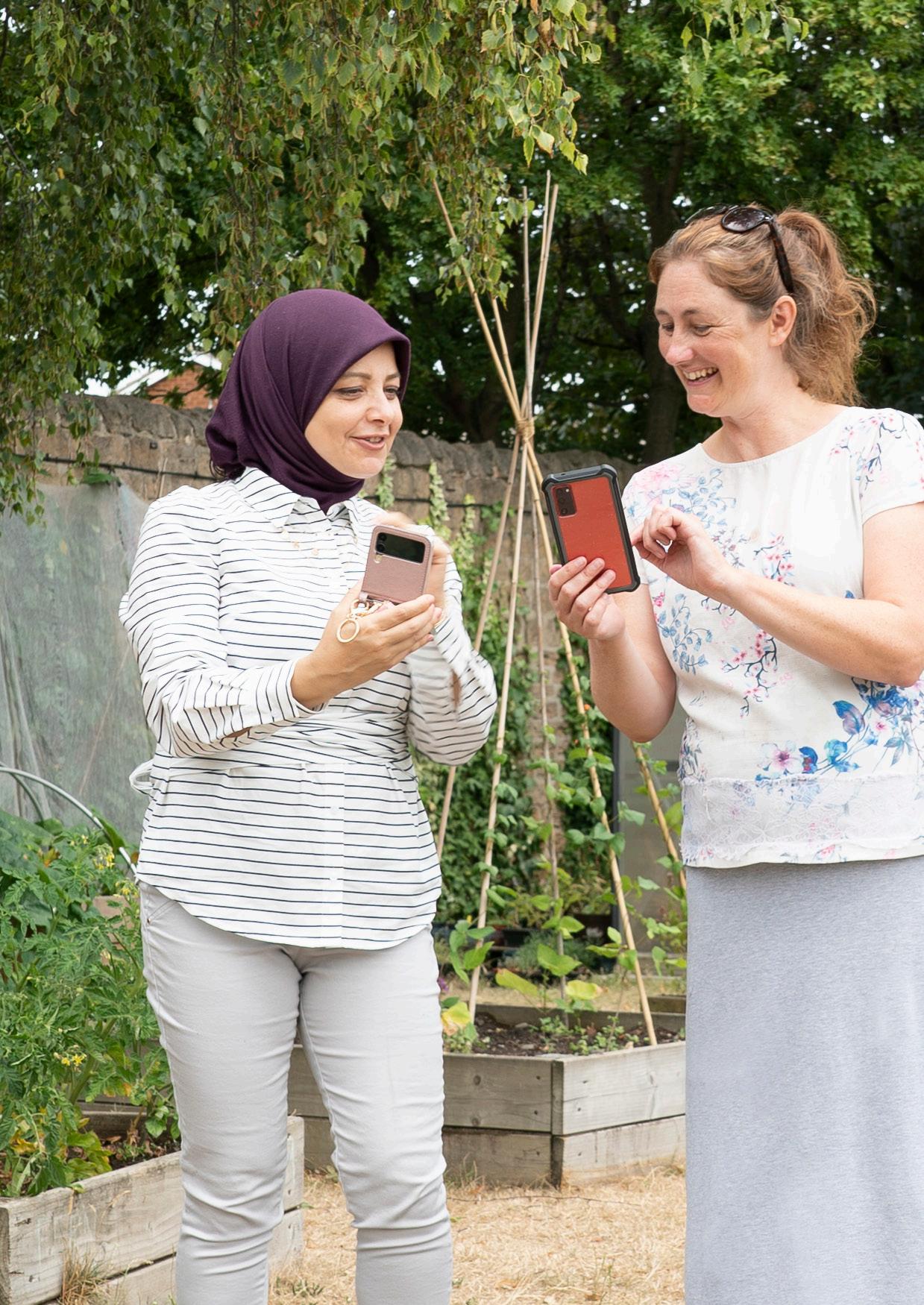

“In the Smart Sensing Lab, everything we build is targeted at a specific user or collaborator. So we don't want to keep things in academic papers. We don't want to keep them in the lab. We want them out in the wild – in the hands of users.”
The Lab’s work is not going unrecognised. NTU has nominated “Tag With Me” for its the research project of the year submission to the Times Higher Education Project, selecting this project above others from the university. Prof Kanjo is suitably humble about their chances.
“They have chosen Tag With Me because it has very strong connection with end user organisations, including the county council, the park management and the hospital. So hopefully, we will have good chance, but you never know.”
Once you see the Tag With Me platform in operation, in the hands of people, and see the difference it can make to bring any location or activity to life, you really do sense the possibilities that the technology brings. Watch this space to see how Smart Sensing Labs continues to improve lives.
“I feel like we have had good feedback, people spending longer outside, more time in the fresh air and walking for a bit longer”
JENNY BAILEY
John Gurnett,



 WRITTEN BY: HELEN ADAMS
WRITTEN BY: HELEN ADAMS
John Gurnett is the General Manager UK and Europe at Innovaccer, a global healthcare technology company with a mission to connect and curate the world’s healthcare information to accelerate innovation and digital transformation.
“I find healthcare to be a fluid and everchanging industry, more than any other I have worked in,” he says. “When I started in healthcare twenty years ago, technology was just a ‘nice to have’—today, most people accept that you can’t provide or improve healthcare without it.”

Innovaccer’s cloud-based Data Activation Platform acquires, curates, and aggregates healthcare data to make it accessible
and useful to improve clinical, financial, and operational outcomes.The platform unifies patient data across systems and care settings, empowering healthcare organisations to develop scalable and future-ready applications. Innovaccer’s solutions have been deployed across 1,600 care settings, enabling over 96,000 individual care providers to transform care delivery for more than 39m people while generating £800m in cumulative cost savings; and to work collaboratively with other stakeholders across the health and social care continuum.
Innovaccer was rated the #1 Data and Analytics Platform


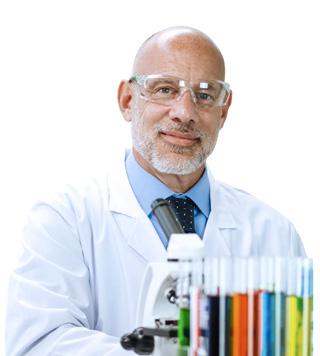

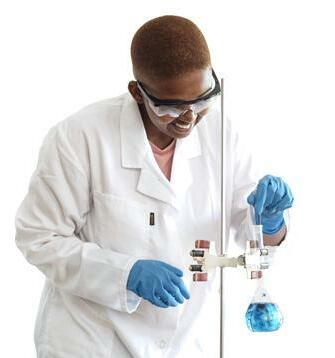



by KLAS, a leading research organisation that recognises technology and service companies in its highly regarded yearly reports for excellence in improving healthcare. In addition, they received a #1 rating for population health technology platform from Black Book—a research
organisation that bases its conclusions solely on client experience scores.

In his role, Gurnett is responsible for communicating the value of Innovaccer’s solutions while leading business and customer success. Innovaccer leads healthcare transformation across the USA through its Health Cloud and offers a range of customised solutions to improve population health management, strengthen patient experience, reduce care costs and bolster clinician support.
“As General Manager, I oversee implementation across care facilities in the UK, and also invest my time in curating tailor-made solutions to better address the specific needs of healthcare providers here,” says Gurnett.
“I find healthcare to be a fluid and ever-changing industry, more than any other I have worked in”

Gurnett’s career did not start in healthcare. He started his career as a management consultant at REL Consultancy, then as an equity partner at Deloitte.
“While at Deloitte, I became fascinated with healthcare and the positive impact technology could have on it,” said Gurnett. “It was during this time that I developed my passion for healthcare, and the role of technology— for more effective delivery of care in terms of equity, outcomes and efficiency. Once I was hooked on healthcare, my career took an unexpected turn. I ended up getting involved in developing hospitals and clinics in the UK and Africa as a CIO for startups for quite a few years, which was again great fun. I then took all of these experiences back to the corporate world, spending the last 12 years, firstly at EMC, then Dell, leading complex healthcare sales in the UK and Europe.”
Later, Gurnett stepped back into consulting, as an executive and partner at IBM. There, he led the reinvigoration and redevelopment of their consulting and services business in the UK, focused on technology for new hospital builds. More recently, Gurnett started to look at the technology requirements for the up and coming Integrated Care Systems.
Innovaccer's market entry: helping organisations improve care and reduce costs After being heavily involved in the successful transformation of healthcare systems in the USA market, Innovaccer is expanding internationally to help organisations accelerate their healthcare innovation and digital transformation.
“Recently, the NHS announced that by 2025 it expects health and social care organisations to have digital maturity,” said Gurnett. “This confirms the digital transformation wave that policymakers and healthcare leaders recognise as necessary for health and social care systems. Innovaccer’s proven technology will help NHS and related healthcare stakeholders accelerate their transformation and add value to healthcare.”
The rise of digital health spotlighted the potential for great advancement, but as has happened in so many other infotech industries, healthcare application vendors have unintentionally created an environment where their solutions lack the need and benefit of true interoperability.
“They have in effect built walled gardens and now, walled clouds which we refer to as data silos,” said Gurnett.
In order to improve care and reduce care costs, healthcare organisations need to ingest and smartly consolidate this fragmented data into unified patient records that enable advanced analytics, integrated workflows, insights at the point of care, and patient-centred holistic care—all of which are essential to improving health and financial outcomes.
“This is why Innovaccer took a different approach from the beginning,” Gurnett explained. “The Innovaccer Health Cloud goes beyond mere interoperability or connectivity, and ushers in an open industry ecosystem based on a unique, patientcentric data model that seals healthcare’s fractures to bring healthcare data and stakeholders together.”
“The move to the UK market was an obvious choice, as digitally-enabled care is expected to go mainstream across the NHS in England—advancing to full digitalisation within the next few years. The NHS is now transitioning to integrated care systems, which are very similar in nature to what we see in the USA and other countries; and the same type of enablement we’ve brought organisations successfully transforming in the USA.”
Rated population health technology platform, according to Black Book
In order to deliver healthcare effectively, the NHS has embraced integrated care systems (ICSs)—as opposed to separate organisations in primary, secondary, and tertiary care and out into social care. Gurnett sees ICSs as key drivers in helping unify patient data across the care continuum.
“I got involved in developing hospitals in the UK and Africa as a CIO for startups, which was great fun”
“Innovaccer enables care teams to make decisions based on that data wherever they sit, whether they're in a GP practice, or a hospital, or an emergency department, or a volunteer in a food bank—gaining the benefits of contextualised data and a complete 360-degree view of the patient.”

Innovaccer unleashes the potential of data and accelerates digital transformation in healthcare Troves of patient data are trapped in proprietary silos, disconnected from one system to the next. Gurnett wants to “tear down the data walls,” and bring this valuable information together, using a scalable cloud platform that unlocks the power of data. Moreover, it provides a basis for new digital services and solutions to be rapidly built with interoperability that’s intrinsic to the solution - not as an afterthought.
“Innovaccer has built the #1 healthcare data and analytics platform,” Gurnett said. “It unifies data into a single, longitudinal patient record; allowing customers to obtain a 360degree view of their patients, drive down unnecessary costs, and improve care quality and cost-effectiveness. The Innovaccer Health Cloud is the first and only internet cloud fundamentally organised around the whole patient and a unified patient record - a single source of clinical and financial truth - to accelerate healthcare’s digital transformation and power the future of health.”
“As General Manager, I invest my time in curating tailor-made solutions to better address the specific needs of healthcare providers”
JOHN GURNETT GM FOR UK & EUROPE, INNOVACCER

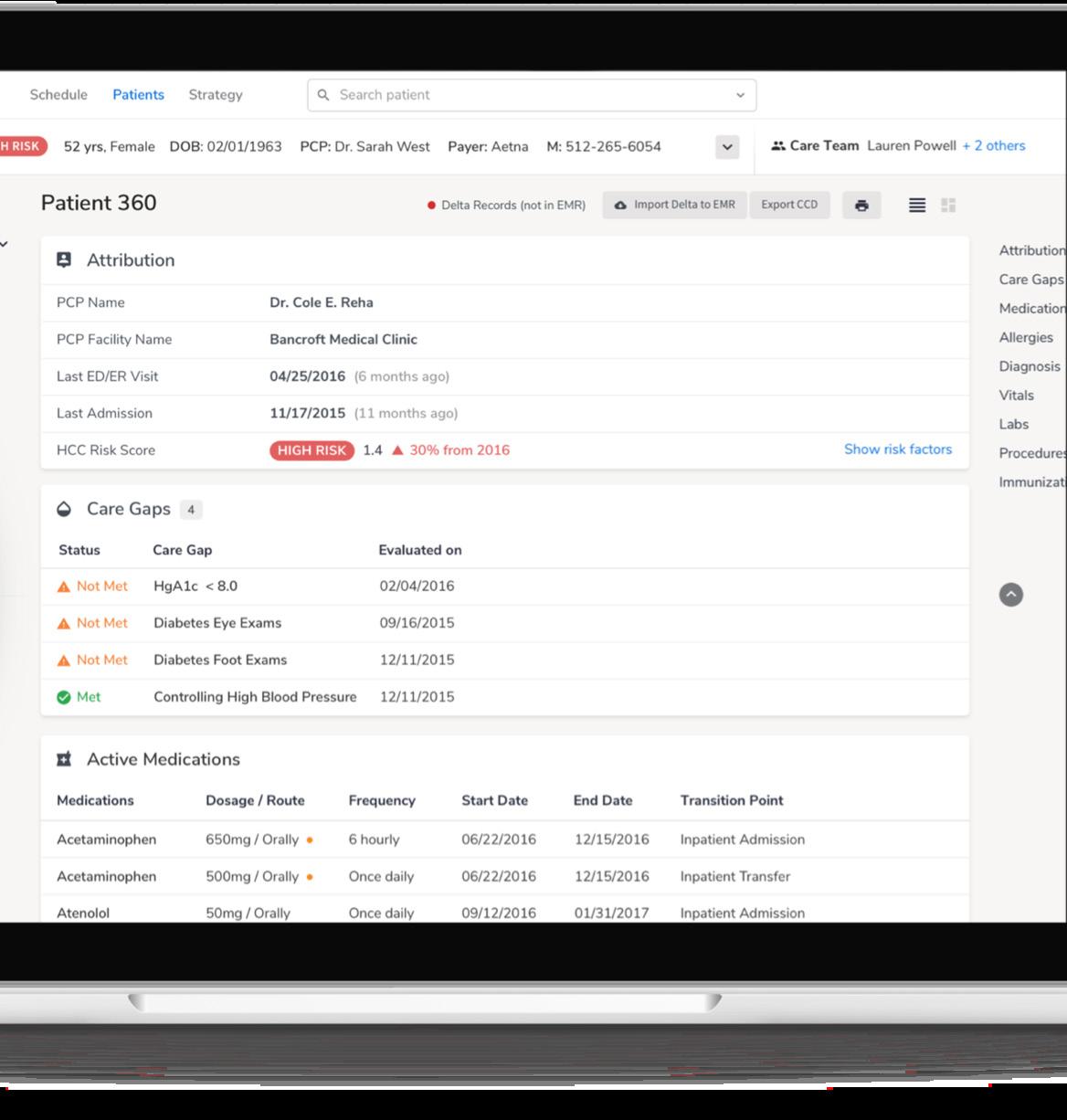



MIKE SADR
WRITTEN BY: NEIL PERRY
 Scott Schwartz: Chief Procurement Officer & Head of Sustaining Engineering, Royal Philips
Scott Schwartz: Chief Procurement Officer & Head of Sustaining Engineering, Royal Philips
There can be few better opportunities to learn about your products and your customers than seeing them in action in the hospital or clinic. Scott Schwartz from Philips recently had that opportunity at a hospital appointment, where he saw the global health technology company’s ultrasound systems being used first hand. As Chief Procurement Officer and Head of Sustaining Engineering at Royal Philips, he knows all too well how important their products are to people all over the world.
“The beauty of what we do here is that we make products and solutions which have a direct connection to our family and friends. Our products help them and other people around the globe improve or save their lives. That’s really inspiring and has motivated me throughout my career in medtech,” says Scott, who has been recently appointed
as Chief Procurement Officer at Philips, in addition to his Sustaining Engineering Lead responsibility. “We help improve the workflows in hospitals, lower the cost of care and have a direct impact on society. That greatly contributes to my job satisfaction: it's all about helping people and improving their life and wellbeing. At some point of our life, we are exposed to our own products either ourselves or our family members, friends or colleagues are. That makes our task very real and puts a face to it.”
This purpose-driven motivation is what Scott also likes to drive into his own team. He was able to build a purpose-driven, high-performance team that understands the impact Philips’ products and solutions have on the end user. Driving strategic ideation into a strong rigour in execution is a valuable mantra for success.
“The key here is that, first, you have really talented, creative people that are always curious to dig deeper, to dig for more – and I think that's the culture that we are trying to create here, that rigour, that depth, that curiosity to find more,” he says. “That is the foundation of trying to find these improvement ideas.”

As Chief Procurement Officer and Head of Sustaining Engineering at Philips, Scott Schwartz highlights how an end-to-end approach to strategic ideation and drive into execution together with strategic partners helps Philips to fulfil its purpose: to improve people’s health and wellbeing through meaningful innovation, to lower the cost of care and improve the patient/customer experience.
Scott is very clear on the importance of talent in his own team, but for him, the team doesn’t end at the walls of Philips. He recognised in past company experiences how important it is to team up with strategic partners in the value chain to do things first time right and avoid higher costs in later product lifecycle stages. It is therefore important for Philips to share their purpose as well with their strategic suppliers and connect them to the outcomes desired for the customers and patients.
“I think it's really valuable to hear different users talk about your products,” he says. “A lot of times, what you believe they're going to say is not actually what they end up saying. For me, it was really insightful to talk to the technician because you are thinking they are going to talk a lot about the actual diagnostics, the clarity of the imagery and the quickness of the machine, which are things we are driving
at the company. But instead, a lot of times you end up hearing about the basic ergonomics and usability of the machine. It's important to see that there is more to the overall satisfaction of the customer than just the traditional features you are driving.”
Scott explains that having the customer’s point-of-view helps in ensuring that they are providing market-leading technology that makes a tangible difference to the lives of both patients as well as the healthcare professionals using the equipment.
“We're making these products to help people; real people and real faces are using our products. So that purpose, that responsibility, is constantly reinforced in the organisation and I'm trying to continually implement this outside-in view in the organisation. We want everybody thinking outside-in. What does this product do, and as I understand what it does, how do I improve that?”

Scott Schwartz
Scott Schwartz is currently the Chief Procurement Officer and Head of Sustaining Engineering. He is responsible for the execution of the E2E Procurement & Supplier Management strategies from New Product Development to Life Cycle Management to support key business strategies across all business groups of Royal Philips. The Procurement & Engineering team have a strong engagement in Advanced Development & New Product Development connecting the supplier ecosystem to drive innovation, productivity and quality. In addition, he is responsible for the sustaining engineering team for the Supply Chain & Operations group driving continuous improvement on the marketed products. The Procurement & Engineering team links the Commodity Strategies to the Business Strategies creating local impact and global leverage. Scott joined Philips in 2014 as the Head of Procurement Engineering for the Philips Healthcare businesses.
Prior to Philips, Scott worked for Boston Scientific for 18 years where he held leadership roles in Product Development, Process Development, General Management and Procurement. Prior to Boston Scientific, Scott started his career at 3M Company as a product/ process development engineer.
Scott has a BS in Mechanical Engineering from MIT, a MS in Mechanical Engineering (Statistics Minor) from University of Minnesota, and a MBA from the Carlson School at the University of Minnesota.

We understand medical customers. Since 1999, Kimball Electronics has served the medical market, manufacturing millions of medical devices, medical electronic assemblies, and complex full medical devices. By leveraging our focused medical core competencies, decades of experience, and customer-aligned global footprint, we’re ‘Creating Quality for Life’.
Learn more about how Kimball Electronics is ‘Creating Quality for Life’ for our medical industry customers. Learn more


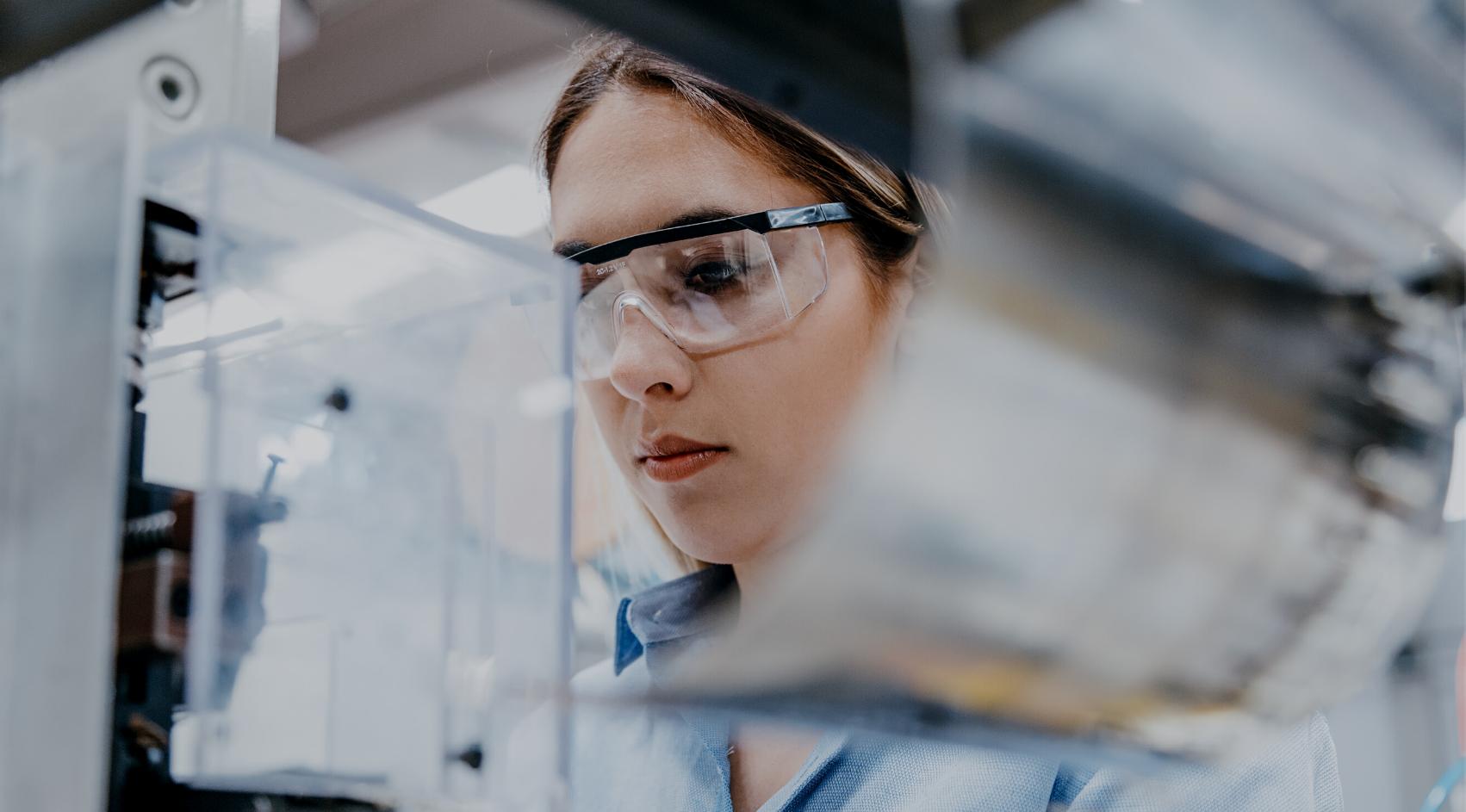

Kimball Electronics used the pandemic to bring its global facilities closer together to build life-saving equipment around the world for the new normal.
The electronics manufacturing company, Kimball Electronics, is expanding, despite the global supply chain crisis, and the new normal. Steve Korn, the President of Global EMS Operations, is ready.
“I’m responsible for all the manufacturing of those facilities, as well as our global supply chain and an IT team, as well as a finance team that supports those operations.”

There are a lot of people reporting to Korn and he knows each of them is a vital employee. “Our people are critical to us and that’s what separates us from our competitors,” says Korn. “We spend time making sure that we have the best work environment we can have.”
Kimball Electronics manufactures electronics for products across several markets, including automotive, industrial, medical, and public safety.


“It’s really exciting working across those different industries,” says Korn. “The number one thing for us is in each one of those industries, we manufacture very reliable products. If you’re going to a
hospital and you have an AED device or a monitoring device or a ventilator, the last thing you would want is for it not to work.”
As Kimball Electronics manufactures for the medical and public safety markets, the company has adapted over the pandemic.
“I think a couple things changed us, such as supporting our medical customers,” says Korn. “We did a lot of work for Phillips in building ventilators and building BIPAP equipment, it really helped us focus more into the medical space and public safety.”
Over the pandemic, Korn has had the time to develop professional skills. “I have continued to improve my communication skills — for how to develop communicating virtually and in writing.” Virtually or officebased, Kimball Electronics is ready for the new normal.
The sector comes with a degree of public responsibility, and, as someone who has worked in medtech for the vast majority of their career, Scott says it is something with which you foster a deep connection.
“I wouldn't go anywhere else or to any other sector because the beauty of what we do here is that we make products and solutions which have a direct connection to our family and friends.” Scott’s route to Philips has taken him across different business roles since completing a mechanical engineering degree at MIT. The first career step was to 3M Company
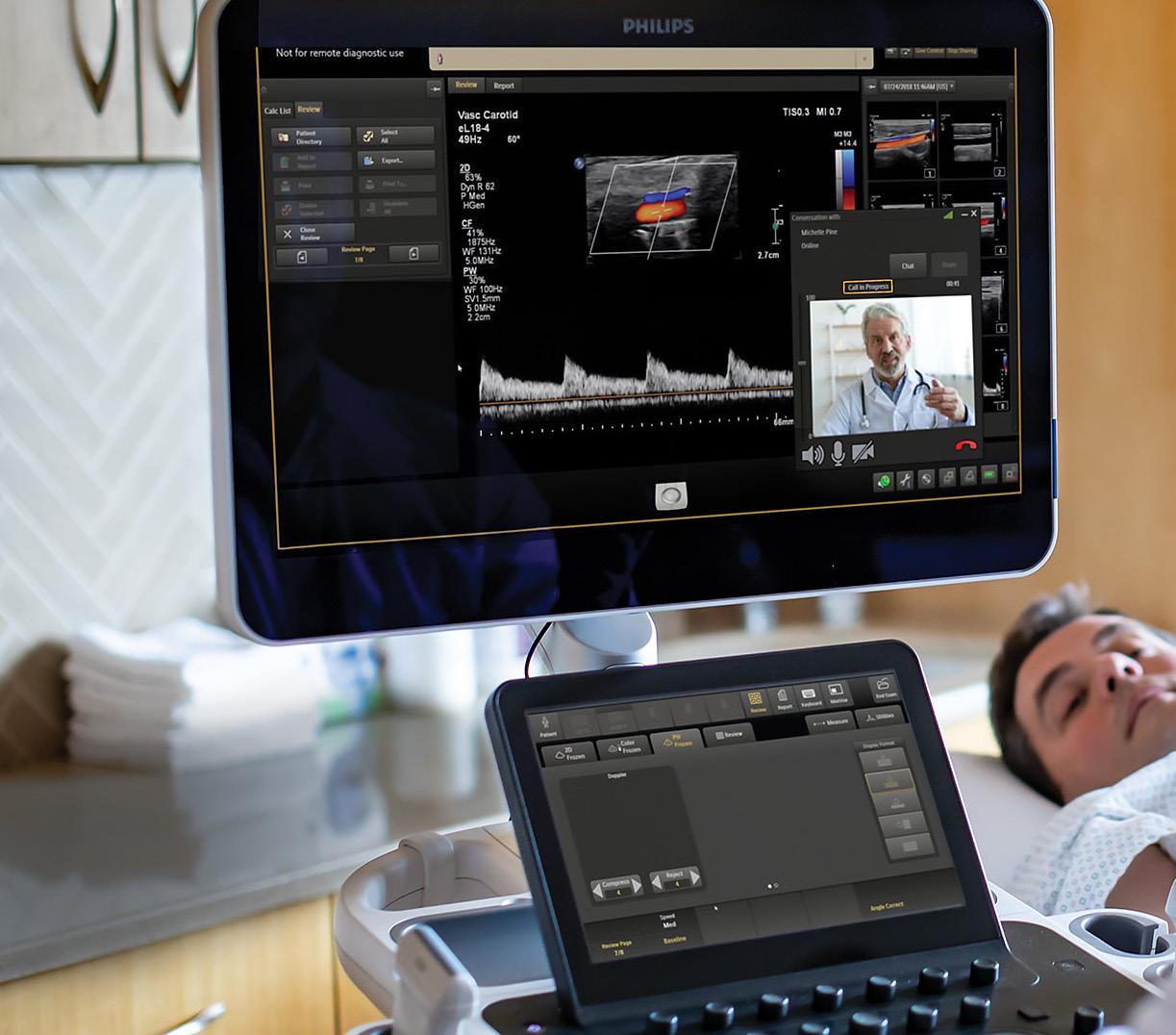
“We want everybody thinking outside-in. What does this product do, and, as I understand what it does, how do I improve that?”
after graduating. He completed a Master’s degree in mechanical engineering and an MBA at the University of Minnesota. Scott says that his goal was always to be a leader of technical people, so he needed to be sure his technical capability was strong to have credibility in an engineering environment, but also having the MBA to bring a broader business view to the table. He then spent eighteen years at Boston Scientific working across product development and supplier engineering, providing him a wide scope of experience to manage products from endto-end during their development.
Scott believes the structure at Philips
Procurement and Sustaining Engineering is one of their key strengths, as it allows them to have more of an end-to-end overview of products, from inception to delivery. As well as the traditional procurement responsibilities that fall under his responsibility, there is also an engineering arm connected directly to procurement, which allows them to drive the overall strategy through partnerships with their supplier base.
“It’s a unique combination compared to most other procurement organisations that you would typically see,” he says. “We are also heavily involved in new product
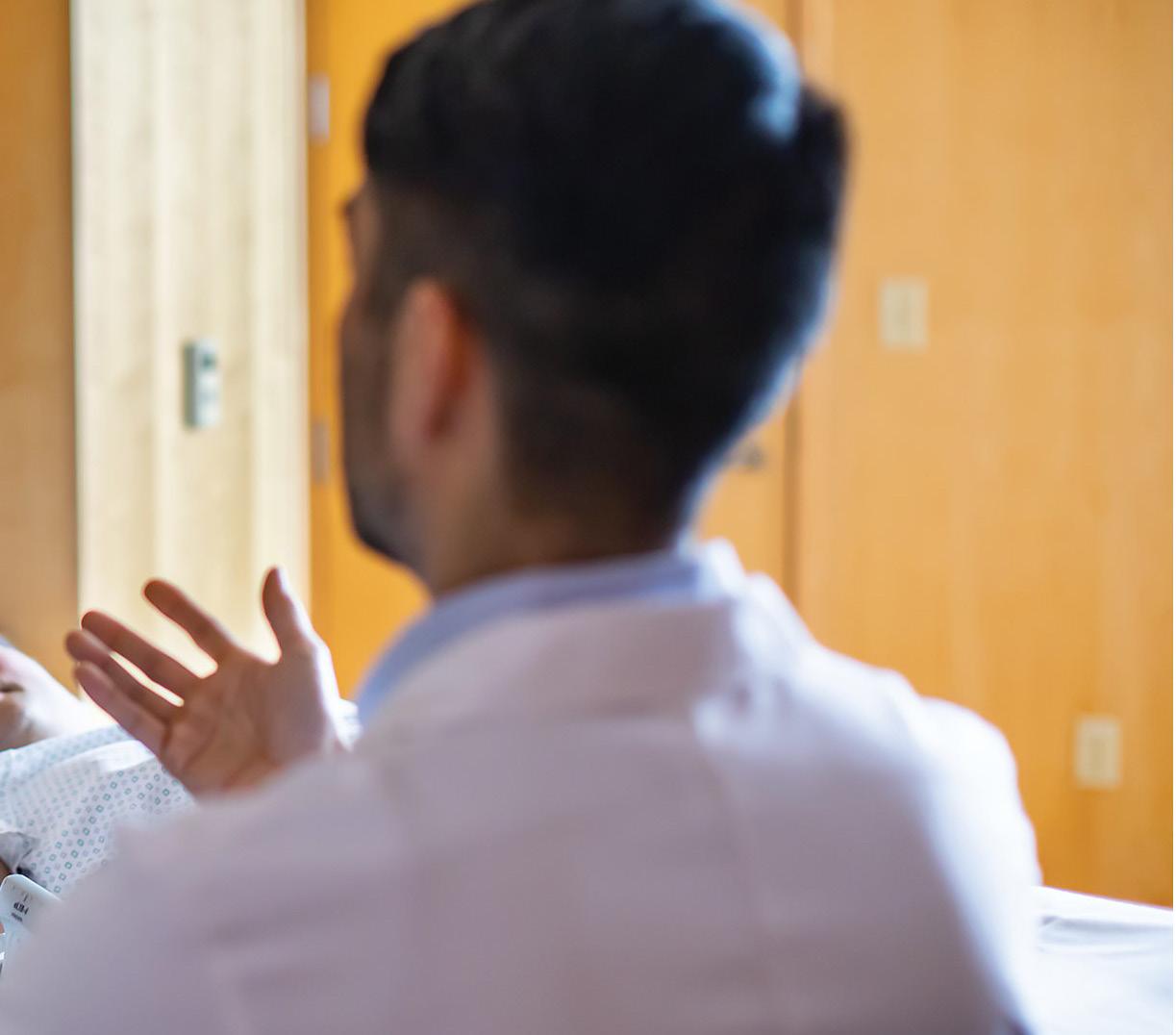


























Made up of 8,000 people, in 19 factories, across three continents, “Volex’s global footprint is unparalleled in our industry,” says Paul Bullock, COO Europe, Volex.

Since 2004, Volex has been supplying Philips with its services. “We started providing cables for their defibrillator products,” says Bullock. “Over the last 18 years, that relationship has grown to be a global strategic partnership, underpinned by three pillars: exceptional quality, global footprint, and scale.”
“We have seven factories right now that are approved to the ISO 13485 medical standard, and recently, with Philips’ promotion and support, our Tijuana, Mexico factory was able to achieve MedAccred accreditation, becoming the first cable and wire harness accredited supplier in the whole of Mexico, which was a fantastic achievement,” says Bullock.
Committed to reducing lead times, increasing their market reach, and getting closer to the end customer, local supply and regionalisation of supply chains is becoming increasingly important for Philips.
“Soon we will be supplying Philips from eight locations, with the addition of India.
Volex will be investing in a new factory in the Pune region, close to Philips, supporting the company’s localisation efforts for their supply chain and facilitating their growth plans for the region,” says Bullock.
The scale of Volex affords its customers like Philips to have the confidence that they are working with a global supplier with a worldwide partner ecosystem and global experience. “Volex currently supplies Philips with over 2,200 part numbers, that contain 6,000 raw materials into 20 different Philips locations, which is a huge portfolio of parts with a huge amount of complexity,” says Bullock.
“We manage that expansive portfolio by engaging closely with Philips at a local, regional, and global level through our factory teams, and the executive team, to give Philips the confidence in the quality delivery and service that they’re getting at multiple touch points.” adds Bullock.
“As Philips continues to develop its lifesaving products, Volex will be there as a trusted global integrated manufacturing partner,” concluded Bullock.
development – which I think is common with other procurement organisations – but we are doing it at an even more technical level, partnering with the R&D organisation and getting involved very early in that new product innovation cycle.”

This set up allows Philips to accelerate the strategic execution and drive strategic initiatives from the Procurement perspective, whether that is supply base mobilisation, innovation, cost down and quality up activities. Projects focused on quality, productivity, resilience, or innovation can be driven with great speed in partnership with the supply base. This makes supplier performance management truly end to
SCOTT SCHWARTZ CHIEF PROCUREMENT OFFICER & HEAD OF SUSTAINING ENGINEERING, ROYAL PHILIPSend. It is much faster and more efficient to have the needed resources in one team. By having the internal team joining forces with strategic suppliers, Scott aims to foster a culture of collaborative disruption to drive into fast, customer-oriented outcomes.
Scott has been at Philips through a time of transformation, as it pivoted further into a health technology company, which now is one of the world’s largest health technology companies. It has been a long journey for a company that started in 1891 with its namesake, Frederik Philips and his son Gerard, producing electrical lighting products in an Eindhoven factory before diversifying into home appliances.
“It is key to have these smaller sets of suppliers that are more strategic as we interact with them”





At USI, we deliver global projects within local supports. We bring up the possibility of miniaturiza�on and provide diverse solu�ons from wireless communica�on to medical devices. Most importantly, we share the same values with you.

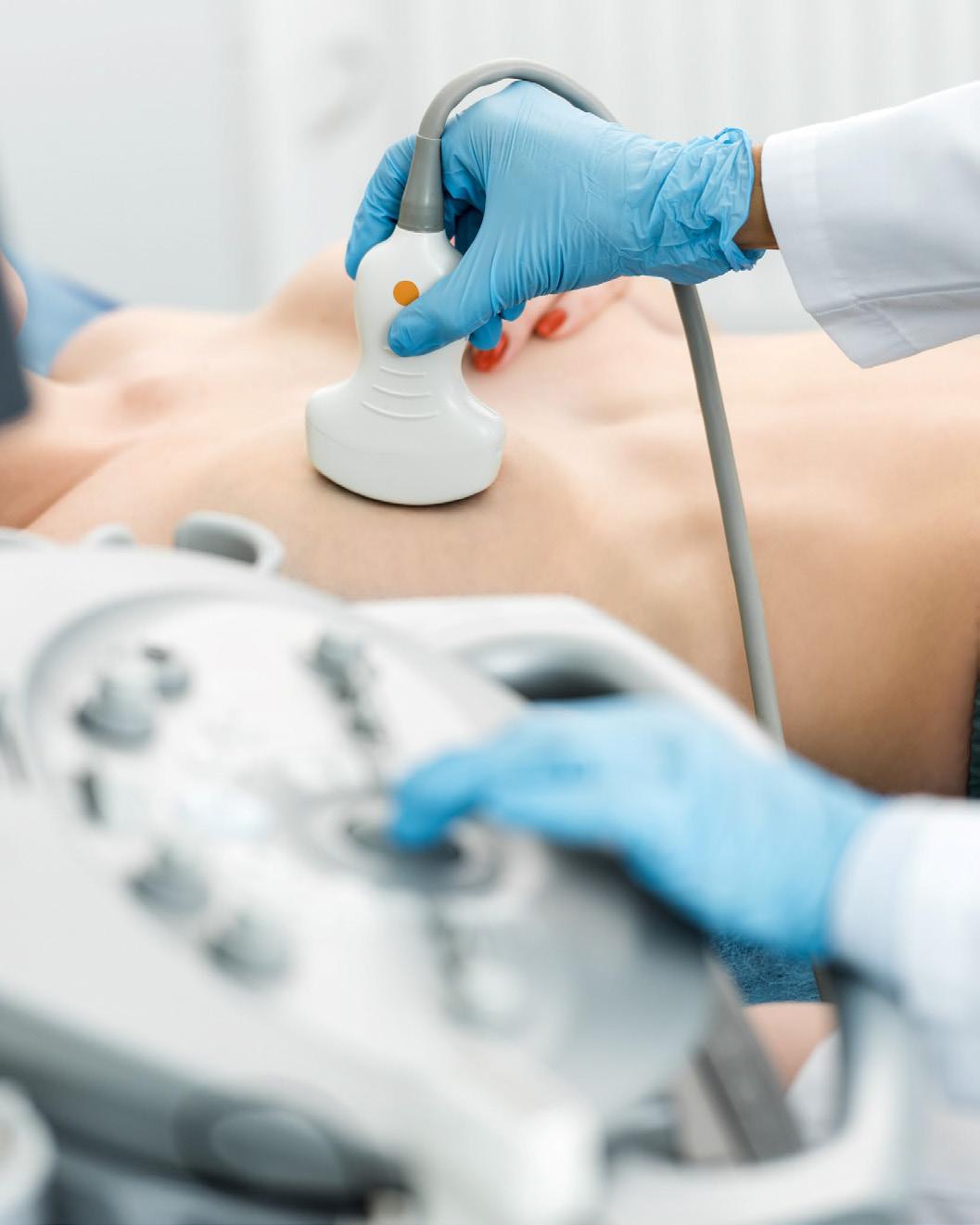
“When I first arrived at Philips, it was basically a conglomerate with a healthcare technology business, the heritage lighting business, personal health and a domestic appliances business. Over those eight years, we've actually transformed pretty impressively in such a short time into a truly health technology company – so, spinning off our lighting business, divesting our domestic appliance business and then creating one of the largest health technology companies in the world.”
“The industry needs to transform from working on hardware alone to driving cost reductions, simplicity in workflow, and improved outcomes for patients. To achieve those ambitious goals, you have to bundle technologies, bring hardware and software together to create solutions that truly solve problems. This requires the procurement organisation to transform as well. It is not about hardware alone anymore. It is about bringing in suppliers that help with the innovation on those solutions which is easier to say but not so easy to be done. Driving innovation on hardware is a little bit more concrete than driving ideation on a solution
that is not easy to conceptualise and requires a lot of pieces to be put together, and that is the challenge we face: how do you bundle solutions that truly improve outcomes, reduce costs and improve the workflow in clinics and hospitals?”
A vital part of that transformation has been the relationship Philips has with their partners and suppliers, which Scott and his colleagues are leveraging to deliver more solutions that improve outcomes, reduce costs, and optimise workflows in clinics and hospitals.
 SCOTT SCHWARTZ CHIEF PROCUREMENT OFFICER & HEAD OF SUSTAINING ENGINEERING, ROYAL PHILIPS
SCOTT SCHWARTZ CHIEF PROCUREMENT OFFICER & HEAD OF SUSTAINING ENGINEERING, ROYAL PHILIPS
“Having a strong partnership with our suppliers is crucial, allowing us to connect the suppliers to our problems, thus connecting the supplier innovation capabilities to our problems, to actually leverage a much broader ecosystem to identify these step-up improvements.”
“The culture that we are trying to create here is that rigour, that depth, that curiosity to find more”
By using an early engagement approach with their suppliers, Scott believes it gives them the best possible chance of delivering solutions and step-up improvements to their products, and, with his role having a larger overview of development, it can bring the best out of those partnerships.
“Everybody thinks that every procurement leader says, ‘We are going to leverage the supplier ecosystem and bring the suppliers closer to our activity’. It’s easy to talk about the concept, but it's very hard to do in practice. We have done some of the structural things, like consolidating our supply base to strategic suppliers that have strategies and visions lined up with Philips’
strategy and vision. I think that it is key to have these smaller sets of suppliers that are more strategic as we interact with them.”
It is this culture of trusted collaborations embedded in these partnerships that allows a stronger bond between the two for the benefit of both parties, and, ultimately, for the customers and patients who use the technology. Scott is confident that the company’s top strategic partners feel listened to and empowered to play an active role in the process of product development.
“That's the key – that it’s a two-way street,” he says. “They are partners and so we have confidence in them, but it's also our responsibility to treat them like strategic
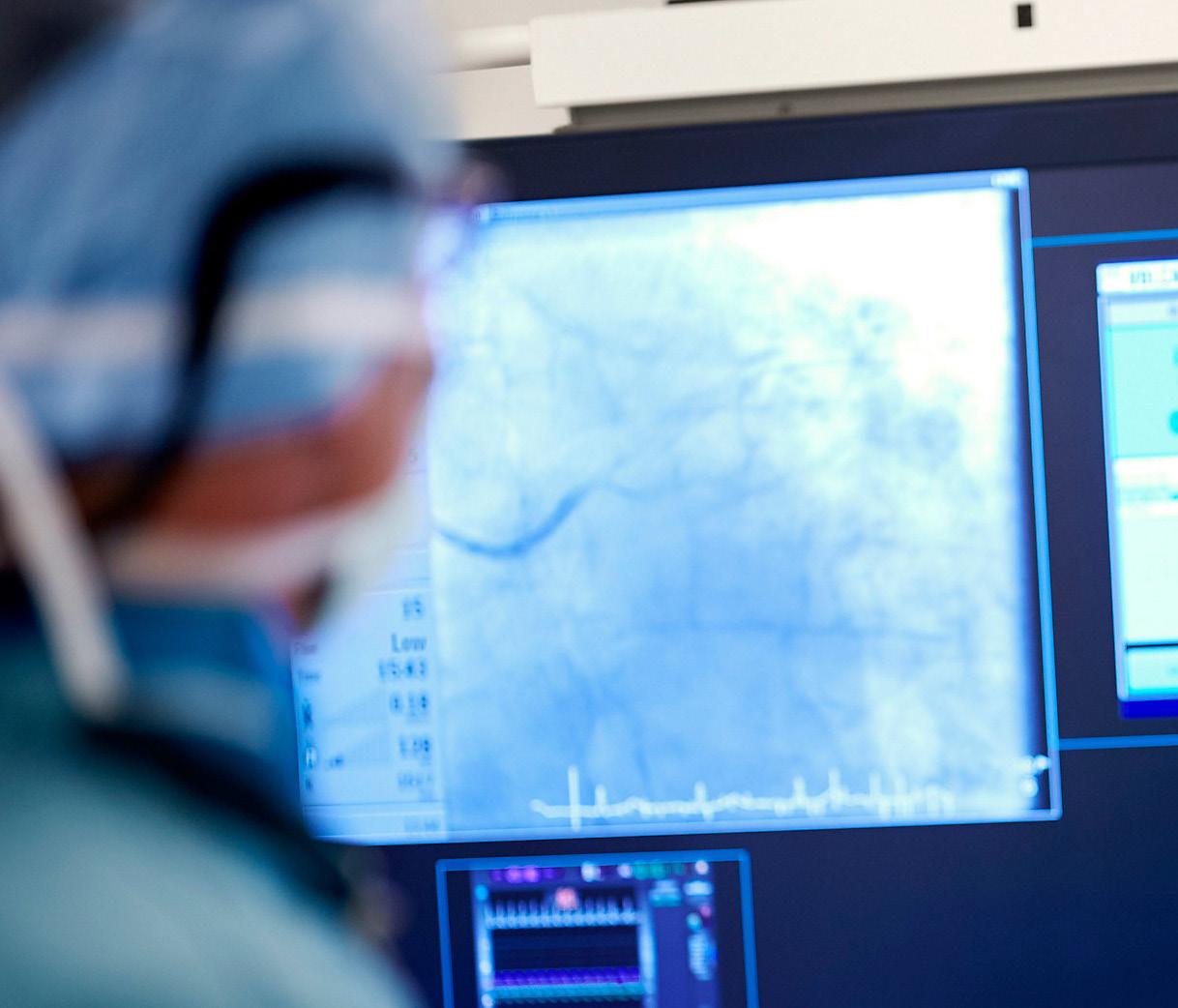
“What is really inspiring about this whole industry is that we are helping people”
partners and give them benefits for being our strategic partners. Whether that is access to our new product development opportunities or focusing on other creative innovations that we are working on, we want them to feel part of Philips.”
Scott also says that they strive to make sure there is a flow of communication and innovation coming from their suppliers for productivity, quality, performance, and resilience. That is the benefit of connecting a strong procurement organisation with a sustaining engineering capability to drive execution.
All those ideas permeate through product development cycle to the consulting
rooms, clinics and wards of hospitals and clinics around the world. It was following his appointment that Scott got to witness the benefits of that approach first hand and see staff interacting with their innovations.
‘It was just very insightful to talk to the technician and ask him about Philips and our products – that is what it's all about. Not only the connectivity to the personal experience you have with our products, but also seeing that our products are perceived as delivering on their high-quality premise. And that's satisfying as well.”
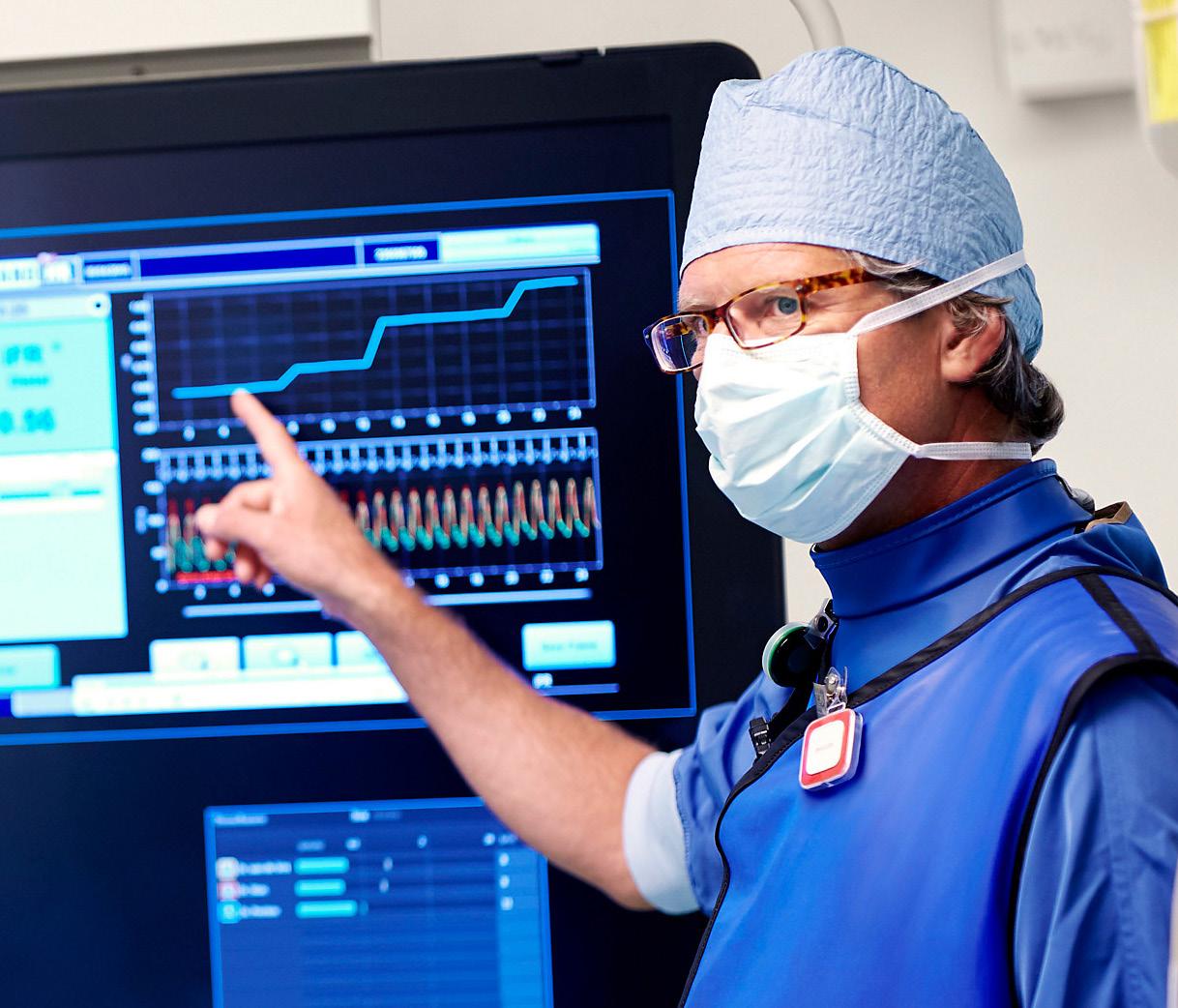

Greg Samios, President & CEO at Wolters
the
WRITTEN BY: HELEN ADAMSMedical errors are the third leading cause of death in the USA every yearright behind heart disease and cancer.
“You’ve got coronary disease, cancer and then you've got medical errors, which variation of care is a contributor to,” explains Greg Samios, President & CEO Clinical Effectiveness for Wolters Kluwer Health.
“So, if we can solve that variation of care problem, that will save a lot of lives.”
This is something which Wolters Kluwer Health wants to do. Headquartered in Waltham, Massachusetts, it is part of the global information service company Wolters
Kluwer. Its aim is to solve the problems related to the variations in healthcare and make sure that each patient benefits from the clinician having access to the clearest knowledge and evidence available about their health.

Samios is the President & CEO at Wolters Kluwer Health Clinical Effectiveness. A graduate of University of Rochester and Duke University - The Fuqua School of Business, he is now based in Princeton, New Jersey. Samios joined Wolters Kluwer Health in 2014 as President & CEO of Wolters Kluwer Legal & Regulatory US,
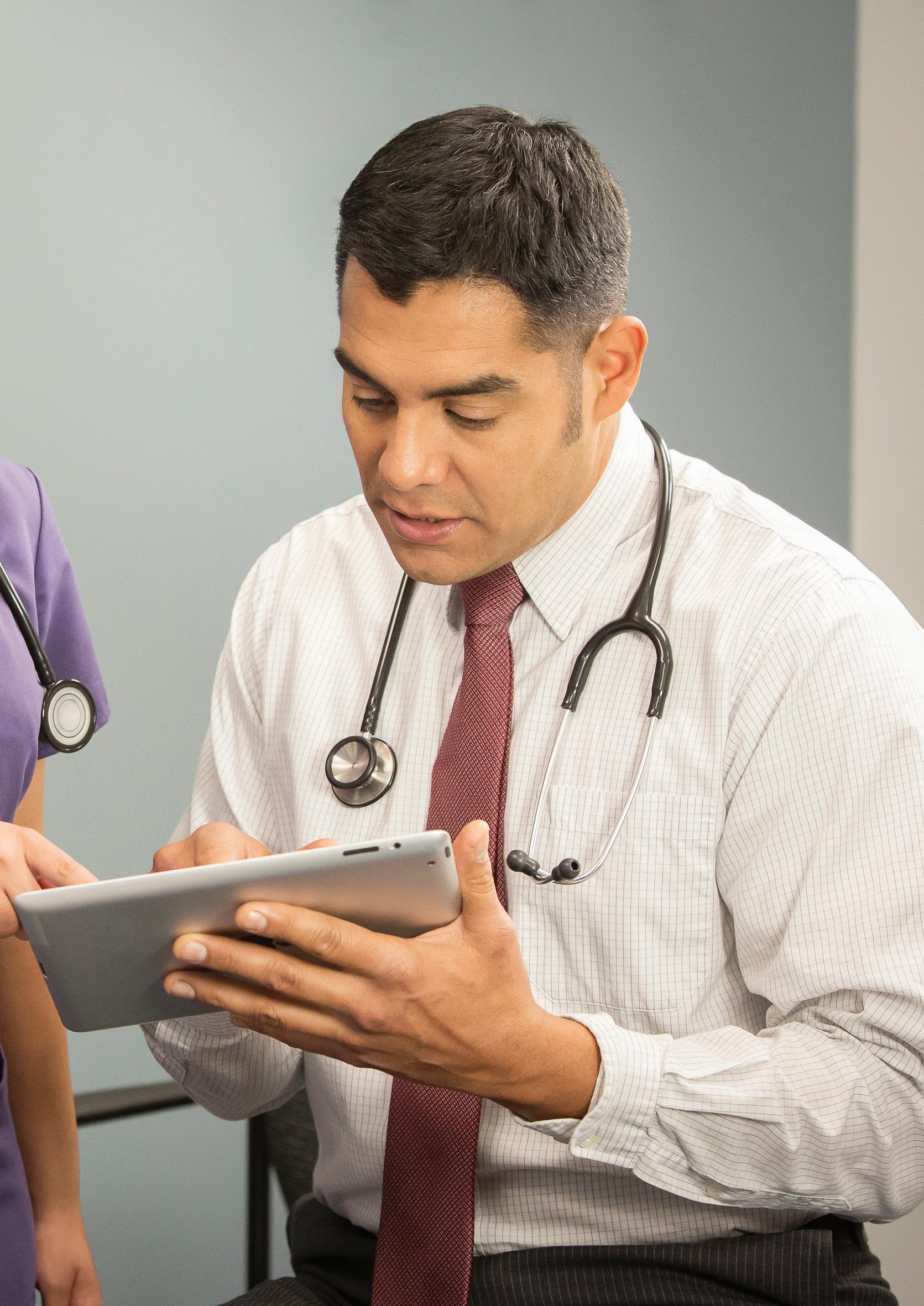

where he was responsible for accelerating the transition to digital solutions and driving profitable growth across the portfolio. In 2019, he became President & CEO of Wolters Kluwer Health Learning, Research & Practice. Prior to joining Wolters Kluwer Health, Samios worked at Kaplan Health Programs, Excerpta Medica (a division of Reed Elsevier) and IT service Elsevier.
Making sure that clinicians have the right information at the right time is not a high-tech solution, says Samios. “We're not saying there isn’t a role for machine learning or AI in this - don't get me wrong. If that helps get more precise, accurate and higher quality delivery, do it. But it's the quality of the clinical information that helps guide the best decision.”
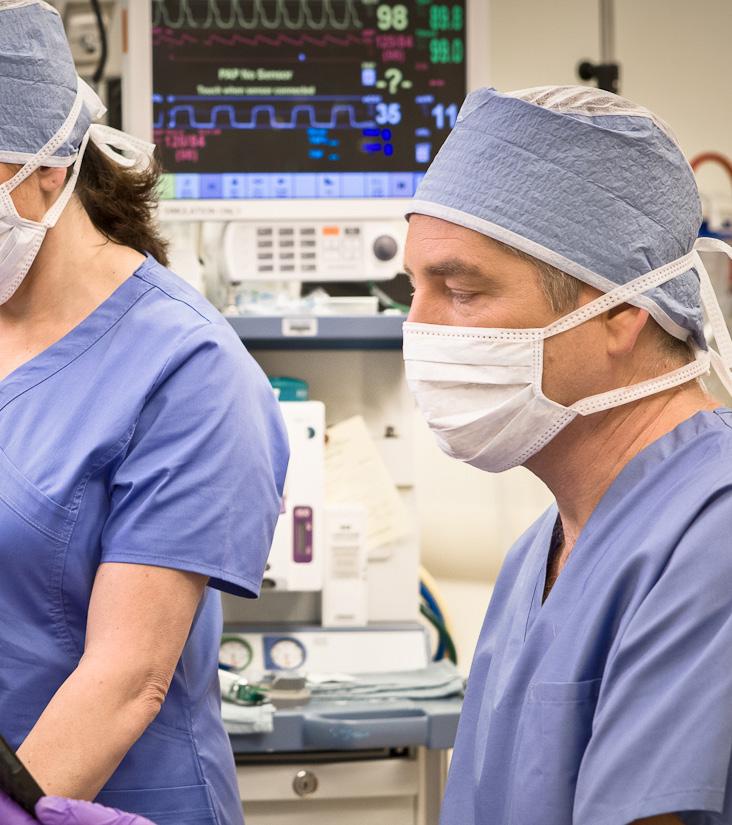

One of Wolters Kluwer Health’s top products is the clinical decision support (CDS) tool, UpToDate, used by over 2m clinicians worldwide. CDS ensures that healthcare staff have access to patient-specific evidence-based clinical information and recommendations, presented at the point of care.

“THAT DATA COULD BE IN YOUR SMARTPHONE, IT COULD BE INTEGRATED WITH YOUR ELECTRONIC HEALTH RECORD OR A TELEHEALTH PLATFORM”
GREG SAMIOS PRESIDENT & CEO, WOLTERS KLUWER HEALTH
As well as ensuring its CDS tools give clinicians the most trustworthy and peerreviewed clinical information, Wolters
Kluwer Health also aims to integrate the information into the workflow.

“That data could be on your smartphone or laptop, it could be integrated with your electronic health record or a telehealth platform,” says Samios. “One of the best descriptions I have heard to describe UpToDate is ‘It's like having the world's best specialists at your bedside.’ When patients present their symptoms, you can quickly go to UpToDate and you have recommendations from the world's best specialists. That's what we do.”
In today’s highly pressurised medical environment, CDS has another important benefit – workforce wellbeing and retention.
“Physicians are burned out,” says Samios. “By giving them the right information at the right time, we can help them be more
“WE'RE WORKING WITH TELEHEALTH PLAYERS TO MAKE SURE THAT WE OFFER A HIGHER STANDARD OF CARE TO THOSE COMMUNITIES”
effective and reduce their workload. They're not going back and calling for more tests or having to readmit, so it's another part of ensuring lower stress at work and giving staff better tools to do their job.”
Samios believes that this will help staff retention, which is taking a nosedive since the pandemic. According to Forbes, up to 47% of healthcare workers plan to leave their jobs by 2025. CDS could play an important role in reducing this.
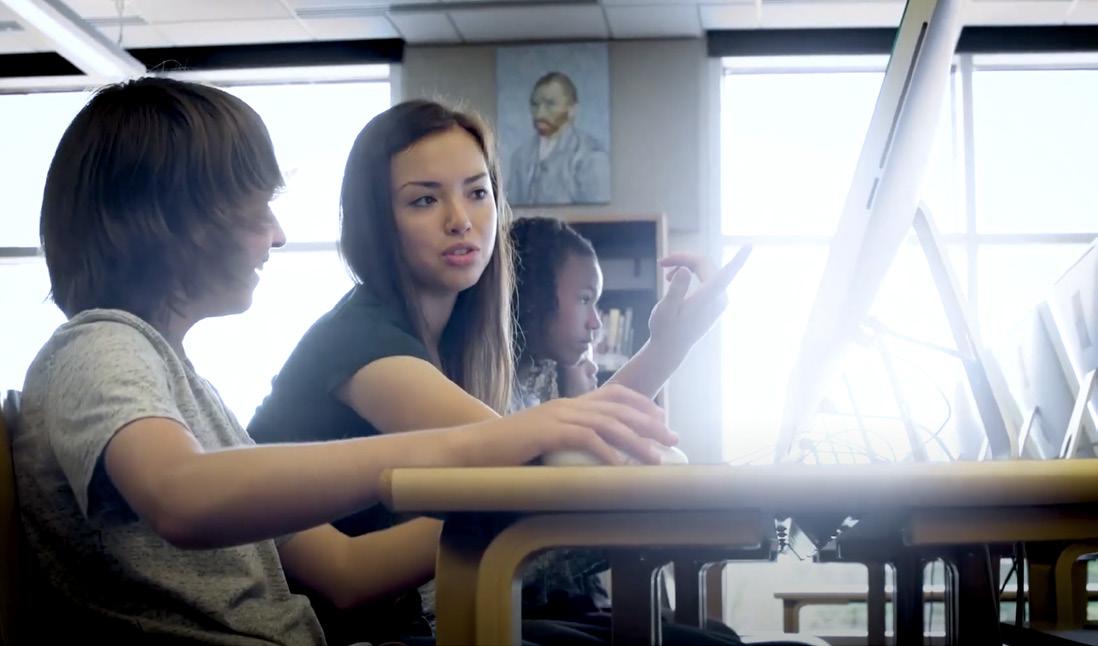

“We're solving a lot of these problems that really came out from, or were accentuated by, the pandemic,” he adds.
COVID-19 has focused attention on so many issues across healthcare – including the need to boost health equity among underserved communities.
Regarding health equity, Samios has a clear definition. “It's about making sure every patient gets the absolute best health care that they should get and that there are no disadvantaged communities - it’s a
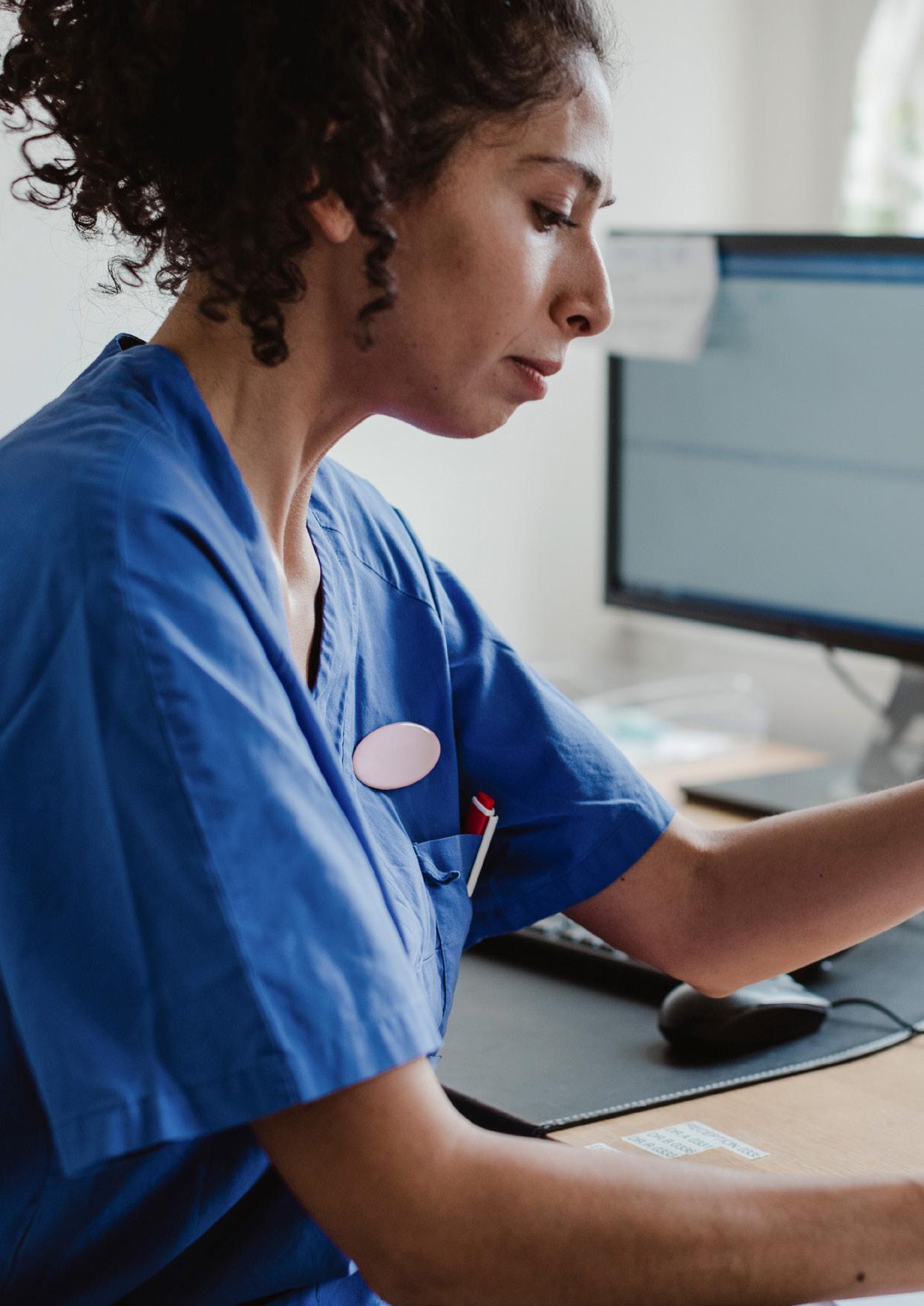
“IT'S THE QUALITY OF THE CLINICAL INFORMATION THAT HELPS GUIDE THE BEST DECISION”
GREG SAMIOS PRESIDENT & CEO, WOLTERS KLUWER HEALTH
one sentence type of answer,” he explains. “There are many underserved communities which we know have not received that. What we're striving for is to reduce variation of care through the delivery of clinical decision support.”
Boosting health equity with CDS and telehealth Wolters Kluwer Health says wider access to telehealth, linked with high-quality CDS, could play an important role in reducing variation of care.
The tougher question is how is this achieved? How does a healthcare company make sure it is language accessible, for underserved communities and those with disabilities?
“We make sure that our information is inclusive, but especially now that we see telehealth expanding access, we need to be in those places and make sure we're participating right now. Think about the way telehealth has evolved with the COVID19 pandemic, a lot of telehealth specialty providers grew rapidly because they needed to. Now, the quality is catching up.
“As the leading evidence-based provider of CDS technology, we have an opportunity to play an important role, helping to improve the quality of telehealth as we gain greater access. We can make sure that the right level of evidence is provided to these telehealth providers,” says Samios.
According to Wolters Kluwer Health, accessible telehealth is the solution which can ensure all patients receive the best and most inclusive care, regardless of their ethnicity, language or cultural background.
“We're working with a lot of telehealth players that are building access to make sure that we have that higher standard of care to those communities. This will enable all patients to receive the best healthcare for them.”

Noga Yerushalmi of M Ventures discusses the benefits of AI in modern healthcare and teaming up with pharma manufacturers AstraZeneca, Merck, Pfizer and Teva
WRITTEN BY: HELEN ADAMSIn the healthcare sector, M Ventures is focused on investments in biotechnology – particularly on companies that aim to build products, platforms and technologies with the potential to advance patient outcomes.
As with all investments in the modern age, M Ventures seeks to become more sustainable by supporting new technologies, services and models that can enhance sustainability – either from the use of different materials or the use of digital technologies.

M Ventures is the corporate venture capital arm of pharmaceutical manufacturer Merck, which invests in ideas formed to drive innovation. Merck, also known as MSD outside of the USA and Canada, may have
been founded back in 1891, but it uses the most cutting-edge scientific methods to improve lives all over the world and design innovative health solutions that can prevent healthcare problems and treat diseases. Particularly in light of COVID-19, Merck is also looking at such potential problems in animals, as well as in people.
Noga Yerushalmi is the Investment Director at M Ventures, the venture capital arm of the Merck Group in Germany. She is based in Israel and her passion for healthcare started in high school.
“I had a very good biology teacher,” she explains. “After military service, I did a BSc in biology.”
Following that was a successful career across life sciences and business



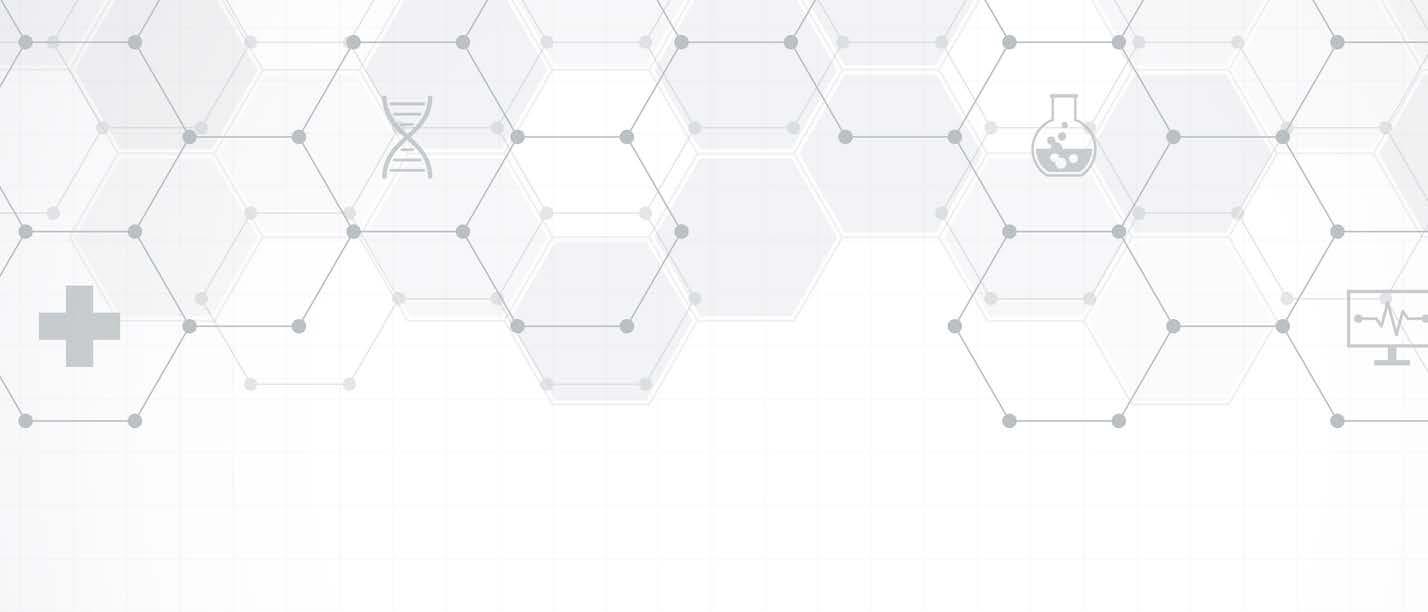


development, before Yerushalmi started at M Ventures in 2018, where she’s involved with AION Labs, an innovation lab that was started by the Israeli Innovation Authority, an arm of the Ministry of Science. Candidates can apply to form a new startup at AION Labs’ headquarters in Rehovot, Israel, with the chosen AION Labs startup team receiving sponsorship from industry partners.
“M Ventures joined forces with big pharma, so our partners are AstraZeneca,
Merck, Pfizer and Teva,” explains Yerushalmi. “It all starts with big pharma defining a challenge they think would be solved with AI tools. After candidates apply to bring solutions to the challenge, we select candidates that can answer it. Within a week of bootcamp, they sit together and try to come up with not just the solution, but a work plan and budget that can later be translated to a company that we will set up.”
The end goal of AION Labs is to enable AI engines to change how pharma works today. “Pharma develops a lot of drugs, but there's attrition in the process,” says Yerushalmi. “We want to make the process more efficient, shorter, and less expensive, for the benefit of farmers, but also patients and doctors across the healthcare sector.”

“It all starts with pharma defining a challenge they think would be solved with AI tools”
NOGA YERUSHALMI INVESTMENT DIRECTOR, M VENTURES
The broader role of AI in modern healthcare In each industry, AI is undoubtedly taking over –completing mundane and even dangerous jobs, letting the human workforce enjoy a more satisfying work role. Yerushalmi believes that the more data that’s collected, the better the prediction tools that the healthcare sector can work with.
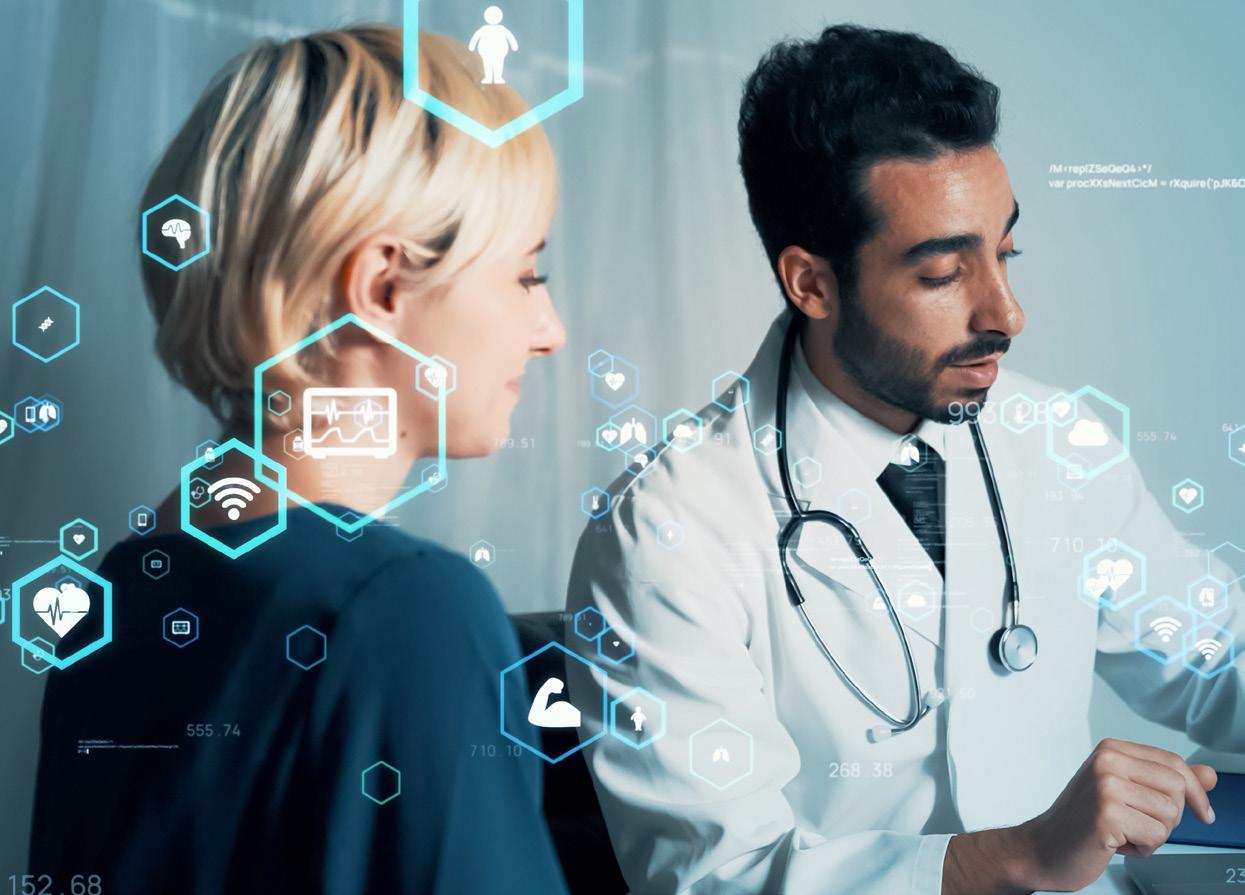
“We need to understand the power of AI and make sure it's handled correctly,” says Yerushalmi. “We need to understand that our predictions are still just models. Although the more data we have, the more we can trust our predictions, it's all still models – and everything needs validation eventually.”
Yerushalmi feels that the biggest challenge facing AI-optimisation of antibodies and targeted therapies is simply managing it.
“AI tools will become better and better with the more data we have, so I think the challenge is how to handle the data,” she says. “First, the data must be secure and anonymous, that's very important. Secondly, any company developing AI tools will face some work in order to standardise it and manage it. Data can be garbage as well as meaningful.”
Pharmaceutical manufacturing teamwork A big part of AION Labs are the partners who support the winning candidates, something
“The end goal is to enable AI engines to change how pharma works today”
NOGA YERUSHALMI INVESTMENT DIRECTOR, M VENTURES
which Yerushalmi is involved with.
“At the beginning, every pharmaceutical company thought they could lead the opportunity to establish the innovation lab,” says Yerushalmi. “Eventually, we saw that the enthusiasm lay with those four pharmas: AstraZeneca, Merck, Pfizer and Teva.”
But eventually, Teva pointed out that, rather than competing with one another, the four pharmas should join forces.
“Kudos to them,” says Yerushalmi. “They brought us to the same table and we agreed to go to the tender together.”
Before the tender, there were many discussions and meetings to be had.
“Once we’d won the tender, the challenge was to reach a shareholders’ agreement. It was a lot of work, especially for the team in Israel,” says Yerushalmi.
The COVID-19 pandemic brought home to Yerushalmi the importance of research and the hard work that goes into it.
“Throughout the pandemic, we understood the value of research. BioNTech and Pfizer were way ahead of the rest,” shares Yerushalmi. “Unfortunately, we also saw a big gap between the benefits scientific work can bring to humanity and the kind of disbelief some people have in science.”
To address this, Yerushalmi believes that society needs to do better in education, so that all people know that they can rely on science when it comes to preserving and maintaining health, and taking care of growing populations.
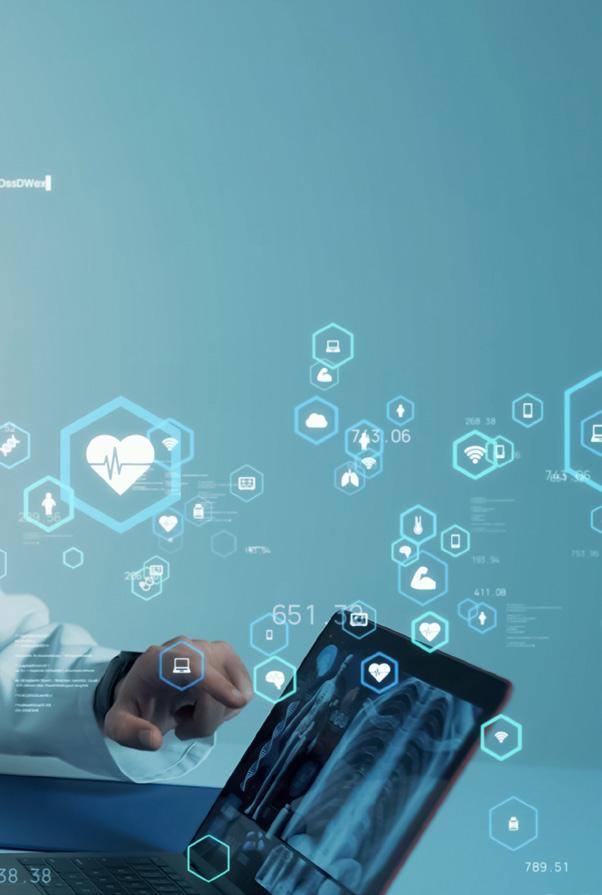
Over the next year, Merck is interested in increasing its foothold in Israel.
“Israel is known to be a place of innovation, talent, and technology,” says Yerushalmi proudly. “Nothing is set yet, but we do plan to increase our visibility here.”
“Israel is known to be a place of innovation, talent, and technology”
NOGA YERUSHALMI INVESTMENT DIRECTOR, M VENTURESM Ventures has joined forces with AstraZeneca, Merck, Pfizer and Teva

Kate Rodger of climate intelligence company Cervest discusses how pharmaceutical companies and their supply chains can become more sustainable
WRITTEN BY: HELEN ADAMSIn every sector, effort is being made to reduce emissions and make a move on the clean energy transition. It’s vital in keeping customers and stakeholders satisfied and also in preparing for a future without reliance on fossil fuels.
Yet progress in the pharmaceutical sector is slow, with some arguing that it’s due to the essential work healthcare is responsible for and the growing fragility of the industry over the past two years.

The World Health Organisation has warned that climate change will have a huge impact on human health, forecasting up to 250,000 deaths from malnutrition, malaria,
diarrhoea and heat stress each year across 2030 to 2050. Beyond that, it is unclear.
Already in 2022, extreme weather has resulted in deaths across the world. In the UK, a 40 degree heat wave in July was responsible for up to 1,000 deaths, mostly in the elderly. In Pakistan, another heat wave caused glaciers to melt and unusually heavy monsoon rainfall. One third of Pakistan is underwater and there have been 1,559 recorded deaths. Both of these events are believed to have been caused by climate change.
The pharmaceutical industry is no different to other sectors – the desire for
Over the past 18 months the NHS has faced unprecedented demand and pressures due to COVID-19.

The response to the pandemic was launched on many fronts - treating the ill, test and trace to minimise the spread of the virus and then the vaccine program.
Scotland faced unique challenges in trying to manage at pace such a geographically disperse population, so it remained imperative that NHS Scotland had the ability to rapidly record and process data in real time.
With NHS Scotland facing such an urgent problem, we approached them with a solution: working with Apple to acquire 1,600 iPads, which we then deployed with connectivity, dedicated software, mobile device management, logistics, support and crucially, network security, in partnership with Check Point Software Technologies.
The iPads allow NHS staff to easily and securely record people who have registered for the vaccine, update details to the central database (via wifi and our 4G network), record which vaccine they’ve had and when their next appointment is due.
We manage the full solution under our Digital Workplace portfolio, so they don’t have to - allowing NHS staff to focus on their day-to-
day work. Updates are immediate, ensuring that everyone always has the very latest information – essential for an effective, fast-moving rollout.
Working closely with Check Point, we were able to ensure that the security embedded in this deployment aligned to what NHS Scotland uses in other areas - every device needs to be locked down, secure and protected from a malware, spam and data security perspective.
With time ticking away, we distributed iPads all around the country in the three weeks leading up to Christmas, with Logan Air stepping in to deliver to the Islands on Christmas Eve. We ramped this up to 2,750 iPads by the end of January, ensuring NHS Scotland could get up to their full capacity of vaccination efforts.
The programme was a direct aid to helping to put Scotland at the top of the European vaccination league.
By Simeon Maurer O2 Business - Client Manager, Scotland

sustainable change is there, but knowing where to begin is difficult.

Kate Rodger is Head of Customer Success at climate intelligence (CI) company Cervest, which offers science-backed climate intelligence for businesses. Rodger’s work investigates how businesses can use technology to solve challenges, including
how the global pharmaceutical sector can become more sustainable and strengthen its supply chain.
“The pharmaceutical industry is highly vulnerable to the effects of climate change. Any disruption to the production or distribution of pharmaceutical products can have significant cost implications for the company, not to mention health ramifications for people across the globe,” explains Rodger. “Imagine if, during the height of the pandemic, one of the factories producing COVID-19 vaccines had been wiped out by flooding, or its production capacity plummeted due to complications from heat stress?
“Outside of an exceptional event like a global pandemic, production and supply chain continuity is critical. Pharma
“OUTSIDE OF AN EXCEPTIONAL EVENT LIKE A GLOBAL PANDEMIC, PRODUCTION AND SUPPLY CHAIN CONTINUITY IS CRITICAL”
companies simply cannot afford climate impacts that reduce resource availability, increase raw material cost (due to scarcity), or create higher maintenance, repair and replacement costs of damaged assets and equipment.”
The pharmaceutical industry is one of the biggest contributors to global emissions
KATE RODGER HEAD OF CUSTOMER SUCCESS, CERVESTResults from studies show that the pharmaceutical industry has a huge carbon footprint.
“The designation as one of the biggest contributors to global greenhouse gas (GHG) emissions relates to the pharma industry’s heavy resource use in product development and production – including large-scale water consumption – and its complex
supply chains with large carbon footprints,” says Rodger. “Beyond carbon intensity, pharmaceutical operations rely heavily on water in various production processes.”
Water availability is becoming a sustainability challenge that companies are looking to improve. According to data from Water Footprint, in 2020, pharma manufacturing was responsible for 23% of global water usage.

“Furthermore, the 2020 CDP Global Water report showed that biotech, healthcare and pharma companies reported maximum financial impacts of water risks totalling US$5.29bn – 38% higher than the cost of addressing them (US$3.81bn),” adds Rodger.
Pharmaceutical companies can become more sustainable through an
“ONE OF THE BIGGEST CONTRIBUTORS TO GLOBAL GREENHOUSE GAS (GHG) EMISSIONS RELATES TO THE PHARMA INDUSTRY’S COMPLEX SUPPLY CHAINS”
independently-verified examination of their supply chains. From the boardroom to the factory floor, employees must be educated to make these gradual changes. Rodger believes that pharmaceutical companies must understand their climate risks in order to become more sustainable.
“Many companies have made Net Zero and decarbonisation targets the cornerstone of their sustainability strategy and while it’s an excellent place to start, Net Zero on its own is insufficient,” explains Rodger. “The other, equally important part of sustainability planning is physical risk – protecting physical assets, including manufacturing plants and distribution centres, from the effects of accelerating climate events.”
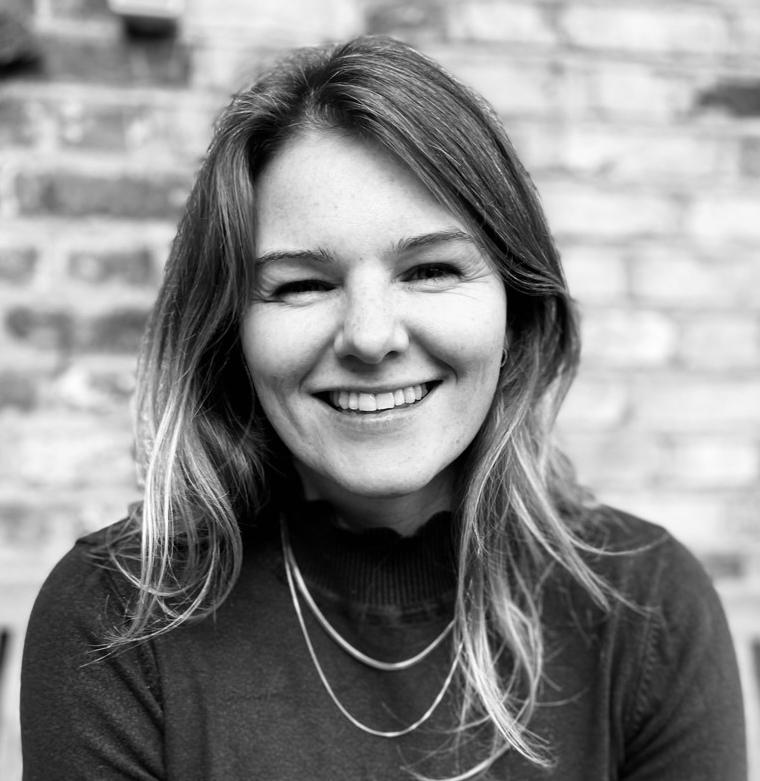
Cervest’s founder & CEO Iggy Bassi has warned that, regardless of hitting Net Zero, there will still be environmental problems that humanity must face.
“Reaching Net Zero is vital to future climate stability, but even if we were to attain this goal tomorrow, decades of historic emissions mean that climate volatility is now locked into Earth’s system for years to come,” Bassi said.
Cervest believes that it is critical for pharmaceutical businesses to understand the climate risks facing their built assets, in order for them to begin the clean energy transition.
“Thanks to recent scientific and computing advances, pharma leaders can self-screen assets for climate risk and use the resulting climate intelligence to assess climate risk at the portfolio and asset level, and feed those insights into decisionmaking,” says Rodger. “Cervest makes climate intelligence insights available ‘on demand’ to decision-makers through our EarthScan product. Pharma companies are using EarthScan to assess and quantify the climate risks impacting their assets –their own and those across their supply networks. EarthScan uniquely enables them to assess risk simultaneously across different timeframes, risk categories and climate scenarios. Using these insights, they can make informed adaptation decisions.”
Water Footprint data revealed that ‘industry’, including pharma manufacturing, accounted for 23% of worldwide water usage
Boxes of medicine often come with an instruction leaflet in many different languages, but the patient only needs one. For those who buy the medicine on repeat, they may read the leaflet the first time they use it, but not on subsequent purchases. This means that most of the paper used in medicine box leaflets is unused – but

not without a carbon footprint. Yet, in the smartphone era, a simple QR code on the medicine’s packaging can explain everything to the patient in their language –this is one of the many steps the pharmaceutical industry can take to become more sustainable.

Rodger’s message to the pharma industry is that it must recognise how vulnerable it is to the effects of climate change.
“We are already seeing climate change directly impact manufacturing operations, supply chain continuity and resource availability,” says Rodger. “Overlooking the impact of physical climate risk at the asset level may lead, at best, to expensive shortterm adaptation measures and, at worst, stranded assets, operational disruption and losing out to competitors better placed to scale operations. To meet the growing demand and market opportunity, pharma companies must invest now to pinpoint risk, climate-align decisions, and build asset resilience.”
In the fight against man-made climate change and the push towards clean energy, expensive short-term adaptation will lead to long-term prosperity. Climate intelligence can make this possible.
“PHARMA COMPANIES ARE VULNERABLE TO THE EFFECTS OF CLIMATE CHANGE. WE ARE ALREADY SEEING IT DIRECTLY IMPACT SUPPLY CHAIN CONTINUITY”
With a rise in the number of innovative healthcare companies, we take a look at the Top 10 Chief Medical Officers at the helm of healthcare transformation
WRITTEN BY: HELEN ADAMSSince COVID-19, the role of Chief Medical Officer has risen in importance across the public consciousness. The role requires a medical expert to take on the responsibility of managing a healthcare business and ensure that they provide the best healthcare services.

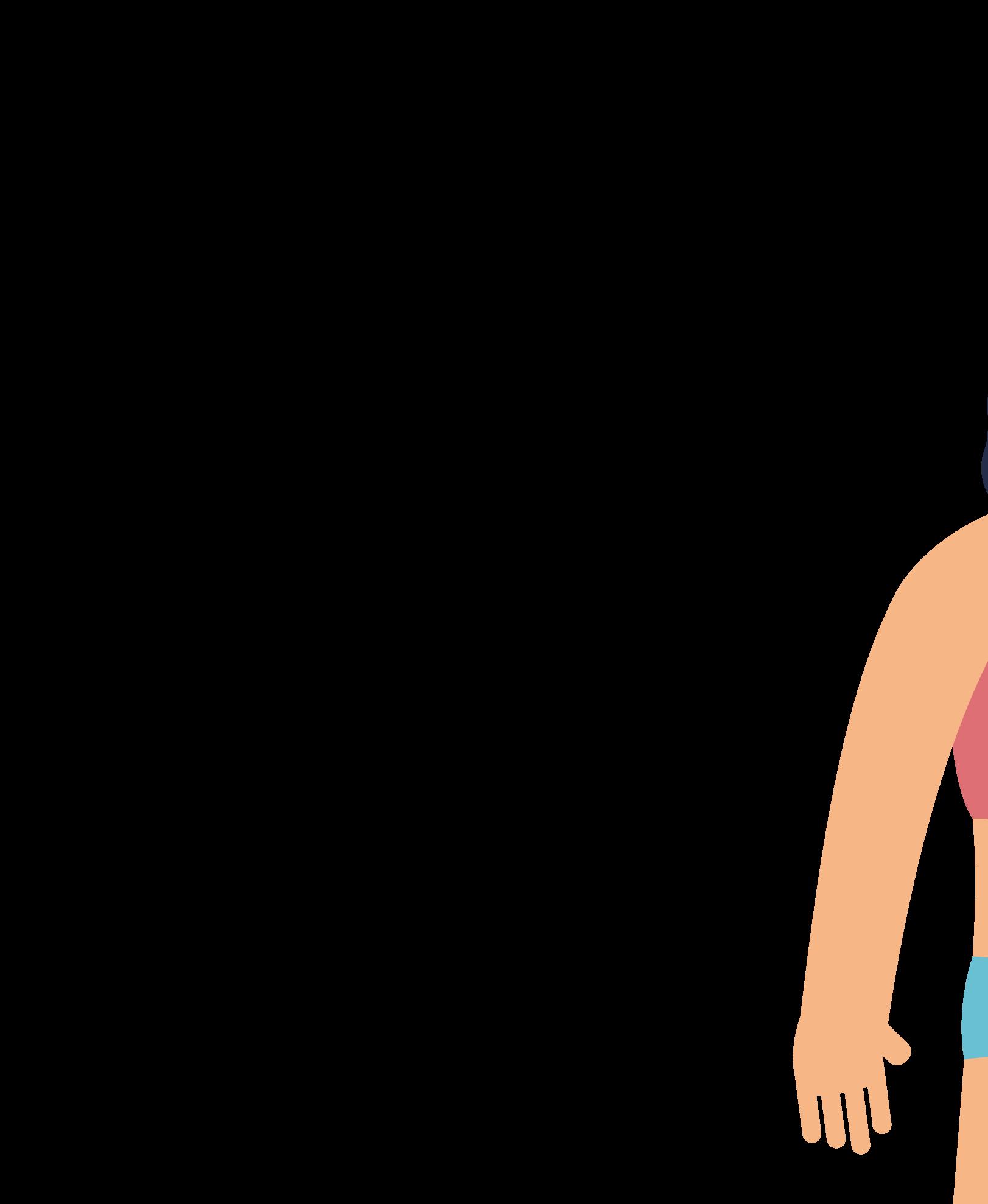
Throughout the pandemic, CMOs have provided objective advice and been a stable voice in guiding vulnerable people through extraordinary circumstances. But in their everyday roles, CMOs lead best healthcare practices, educate employees, and find the most efficient ways to meet customer needs.
From the UAE to Australia, Walmart to CVS Health, here are our Top 10 Chief Medical Officers.
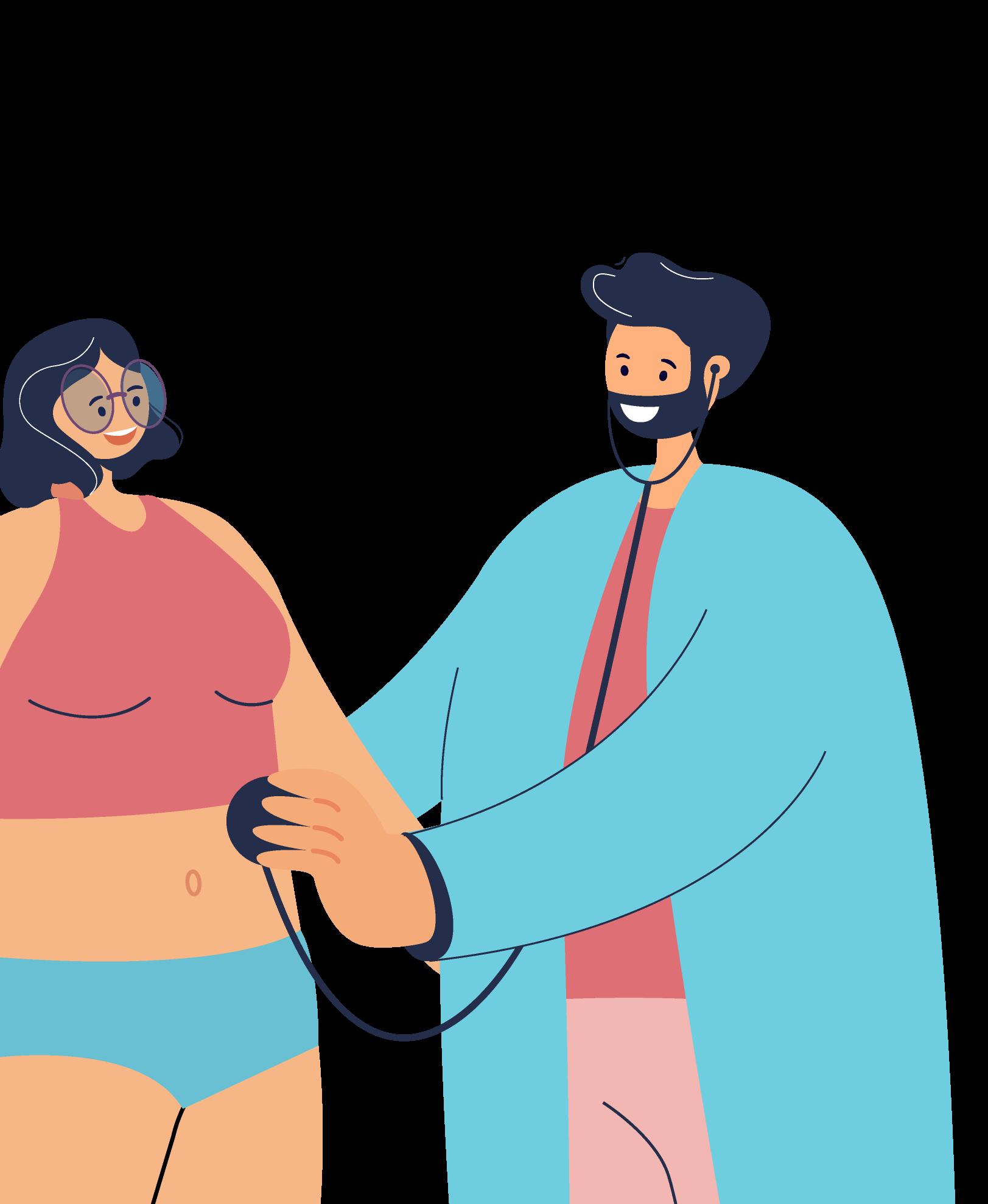
Waldo Concepcion has worked in organ donation across both the USA and the UAE. He is the Chief Medical Officer at Donor Network West in San Ramon, California, and also Professor of Surgery at Mohammed Bin Rashid University of Medicine and Health Sciences in Dubai.
Concepcion co-developed a Liver Transplant initiative at California Pacific Medical between 1988 and 1994, and later became Director of the Transplantation Institute at Loma Linda University. With Concepcion’s guidance, success rates for patients and organ grafts soared.
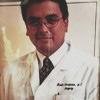 Jide Obosi
Jide Obosi

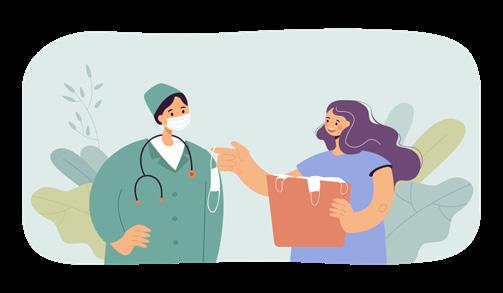
French oil and gas company
TotalEnergies has been in Nigeria for over 60 years, working in the exploration and production of energy. The Chief Medical Officer is Jide Obosi, who has worked for the company for almost 14 years. Prior to his role as Chief Medical Officer, Obosi was the Occupational Health Manager and Occupational Health Physician. He studied Occupational Medicine at The University of Manchester in England, and Health Services Management and Administration at Griffith University in Australia.

“With Concepcion’s guidance, success rates for patients and organ grafts soared”
As the Chief Medical Officer at Sheikh Khalifa Medical City Ajman, al-Ayoubi is a model of clinical governance. He first joined the company in 2019 as Head of the Department of Surgery, before being promoted to CMO the following year.
Previously, al-Ayoubi led the Trauma and Emergency Surgery team at Mafraq hospital. Prior to that, he led Acute Care Surgery at the University Hospital of Linköping. In each role, he focused on advancing teamwork between faculties to build quality patient care.
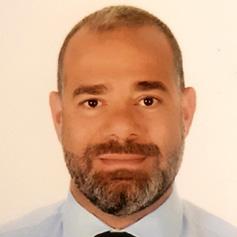
Deloitte Nigeria’s Chief Medical Officer, Bolaji Obadeyi, is based in Lagos, where she offers guidance to the company, especially in regards to COVID-19.

Before working for Deloitte, Obadeyi worked as a radio consultant for Nestlé and for the Lagos State Ministry of Health in planning and delivering primarylevel healthcare to an estimated 25 million people.
She earned a Certificate in Economics of Health from Harvard Business School Online and a PGDip in Health Economics from the University of York.
“She earned a Certificate in Economics of Health from Harvard Business School Online and a PGDip in Health Economics from the University of York”


06Founded in 2013, Telstra Health works to improve lives by delivering digitally-enabled care to its communities by providing software products, solutions and platforms to governments and healthcare providers throughout Australia.

Professor Mark G. Shrime, MD, MPH, PhD and FACS, is the international Chief Medical Officer of Mercy Ships, the world's largest charity hospital ship that offers free surgery and healthcare services across sub-Saharan Africa.
“Surgical care must be an indispensable part of any healthcare system if we are to overcome injustice and improve access to safe, affordable and timely surgery,” said Shrime upon his appointment.
Telstra Health was chosen as a key partner of Gold Coast Health Services, providing their virtual health consultation platform as a way to deliver patient care remotely. “Traditionally, you might go to see a specialist at a hospital and, after a five minute conversation, be sent home,” Jamie Spencer, Regional General Manager Business Development at Telstra Health says. “Someone living in rural Queensland might drive for up to four to six hours for that five minute appointment. Now, rather than people having to make those long journeys to see a specialist, we can provide that consultation to people in their own homes, in a way that leads to a richer conversation, which results in better feedback and, ultimately, a better standard of care.”
Shrime is also a lecturer in global health and social medicine at Harvard Medical School.
Telstra Health’s virtual care technology adopts a twofold approach. First, using Bluetooth connected devices, clinicians

can monitor patients’ blood pressure, pulse oximetry, temperature and weight remotely. These baseline metrics are then combined with a virtual appointment in which the clinician can follow-up with the patient to discuss and provide results.
Based in Melbourne, Australia, Cardiothoracic Surgeon and Associate Professor Victoria Atkinson is the Chief Medical Officer at Healthscope, a leading private healthcare provider with 19,000 employees. Atkinson has a Bachelor of Medicine from Monash University and Master of Health Management from UNSW.

“We’ve found that our service has helped to dramatically reduce readmission rates, and enabled early discharge, which means that patients get to be at home sooner,” enthuses Spencer, who also notes that, “The overarching monitoring aspect can also help people who need readmission get back into hospital sooner, which can make a huge difference in some cases.”
Outside of her work, she has published papers on subjects that directly impact the wellbeing of healthcare professionals, such as ‘Hospitals that heal: Why evidence-based design matters’ and ‘Doctors must stand up to the cowardice of ignoring bullying’.
Spencer, who works closely with Sandip Kumar, Gold Coast Health’s Executive Director of Transformation and Digital, emphasises that the relationship between Telstra Health and Gold Coast is far more than that of vendor and client. “We’re looking for a real partner, not just a customer.”
Chaguturu was made Chief Medical Officer at CVS Health earlier this year and is in charge of advancing clinical quality standards and access to care.
"CVS Health is uniquely positioned to build upon its existing capabilities and extensive reach to improve the healthcare experience for millions of people. Our Medical Affairs organisation will enhance our healthcare services,” said Chaguturu of the company upon his appointment.
Before joining CVS Health, Chaguturu worked at Mass General Brigham and McKinsey and Company.

As Huma’s Chief Medical Officer, Aral is responsible for patient care, safety, and advancing patient outcomes via clinicallyled development. He is a trained health tech professional with a focus on cardiology research.


Within the Huma leadership team, Aral proposes health strategies and business growth across remote patient monitoring and decentralised clinical trials.
Aral studied cardiology via a Master of Science from UCL, focusing on Clinical Cardiology and Cardiovascular Research, which was preceded by obtaining a Bachelor of Medicine from UCL in Biomedicine and Physiology.
Sreekanth Chaguturu
“Chaguturu is in charge of advancing clinical quality standards”



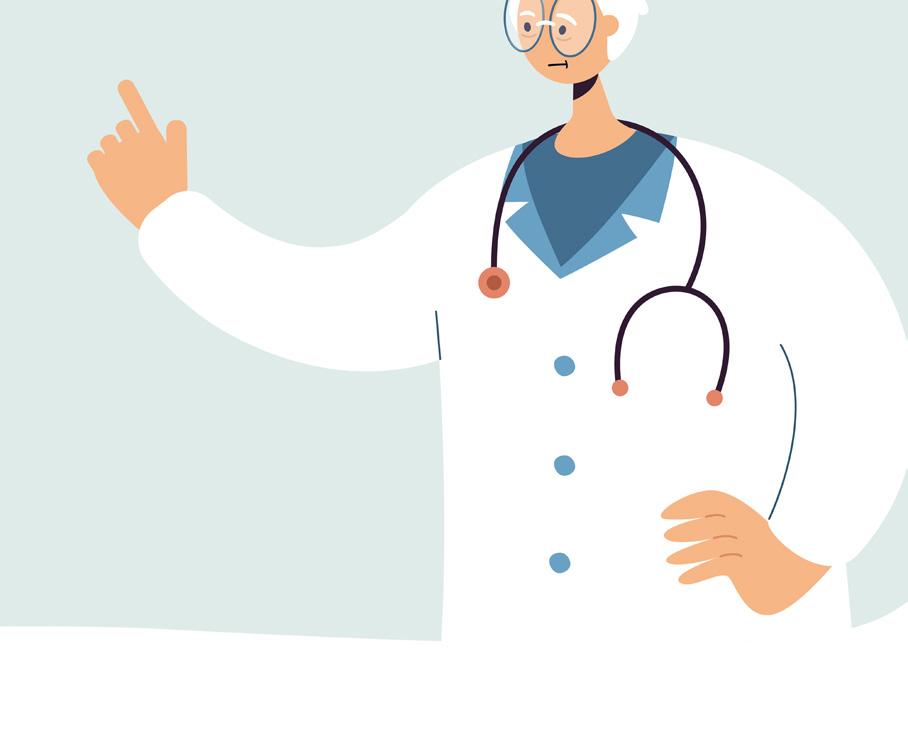
Patchava is a medical doctor who has worked across the USA and the UK in the pharmaceutical, health and medical device sectors. She works at financial service Vitality as Deputy Chief Medical Officer, where her scientific background and professional qualifications are used in digital strategy – though she says her passion is in human engagement.
At Harvard University, she studied Orthopaedic Surgery while on the university rowing team. She earned a Master of Business Administration at the London Business School and, before that, studied Medicine at the University of Cambridge.
Outside of work, Patchava is an Expert Advisor to the UN for the roles of AI and blockchain in the healthcare sector, as well as an Advisor for the World Economic Forum. She spends her time supporting digital health start-ups and engaging in keynote speaker opportunities. Outside of work, she completed the London Marathon at the age of 18 and now enjoys powerlifting.






presentations, Q&A sessions to 1-2-1 networking, the 2-day hybrid show is an essential deep dive into issues impacting the future of each industry today.

Global giants and innovative startups will all find the perfect platform with direct access to an engaged and active audience. You can’t afford to miss this opportunity.
See

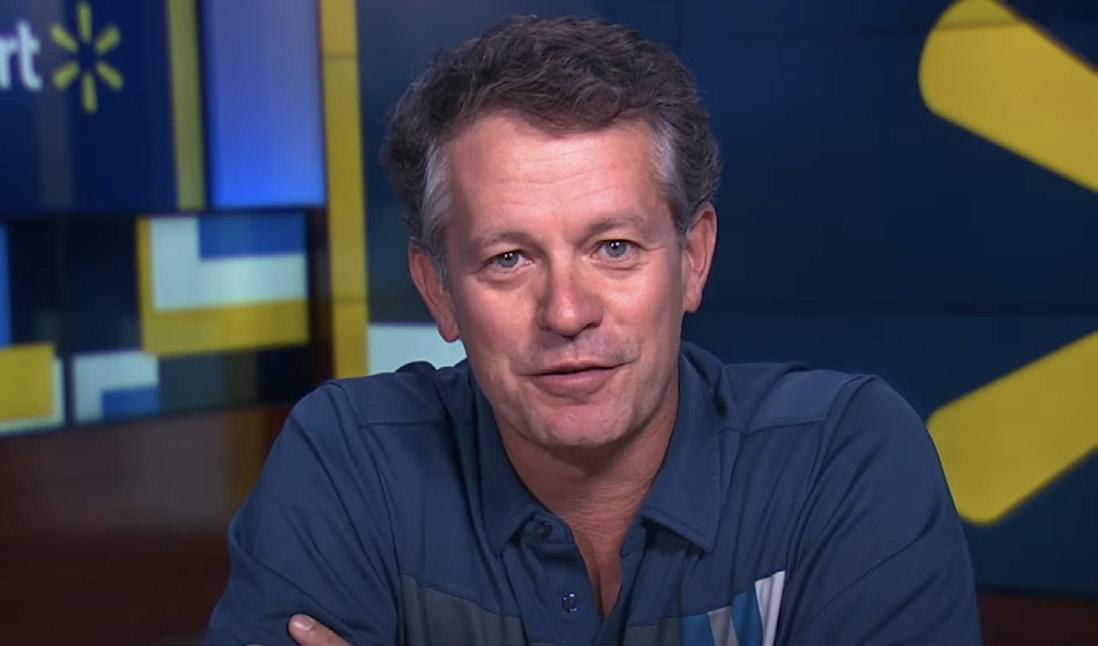

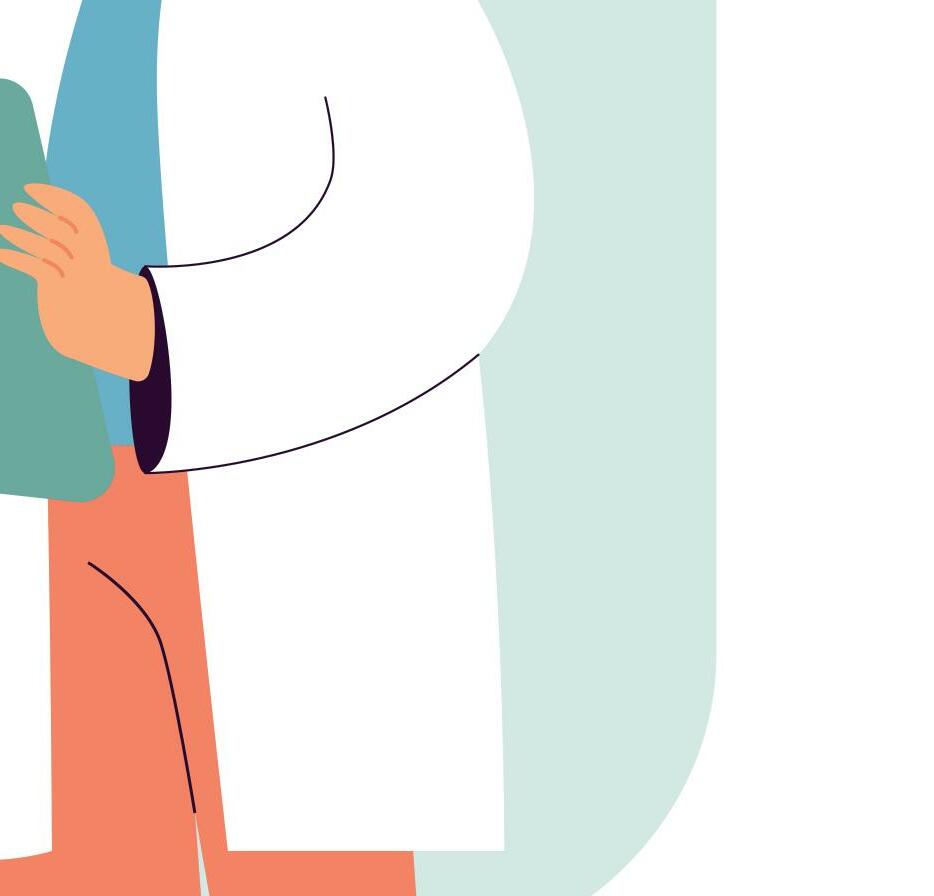



Doctor John Wigneswaran is the Chief Medical Officer of Walmart, the biggest employer in the USA with 2,300,000 workers. He assumed the role in 2021 and now leads the company in its clinical initiatives.
Wigneswaran is a practising nephrologist and a veteran in the pharmaceutical sector, having previously worked in similar roles at Express Scripts, DaVita, Fresenius Medical Care and also Johnson & Johnson.
Walmart has teamed up with the American Heart Association to open a virtual diabetes management service at Walmart pharmacies, which includes education around diabetes in addition to behavioural health awareness, counselling and, most importantly, necessary vaccinations and low-cost insulin.
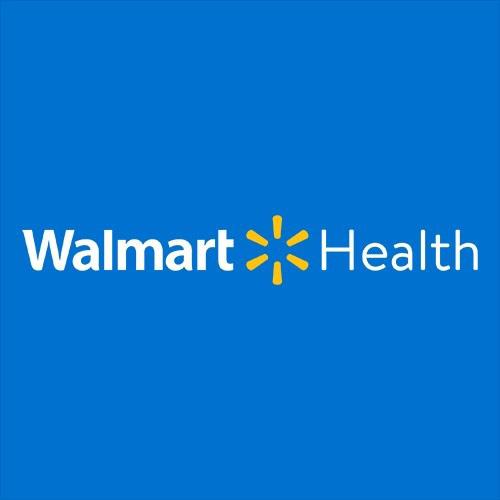
“Our aim is to empower patients with the most up-to-date diabetes education and clinical care so they can take control of their health,” said Wigneswaran. “We focus on a patient’s physical and mental health, which also helps employers maintain healthier workforces and drive down overall healthcare costs.”

“Walmart has teamed up with the American Heart Association to open a virtual diabetes management service at Walmart pharmacies”

